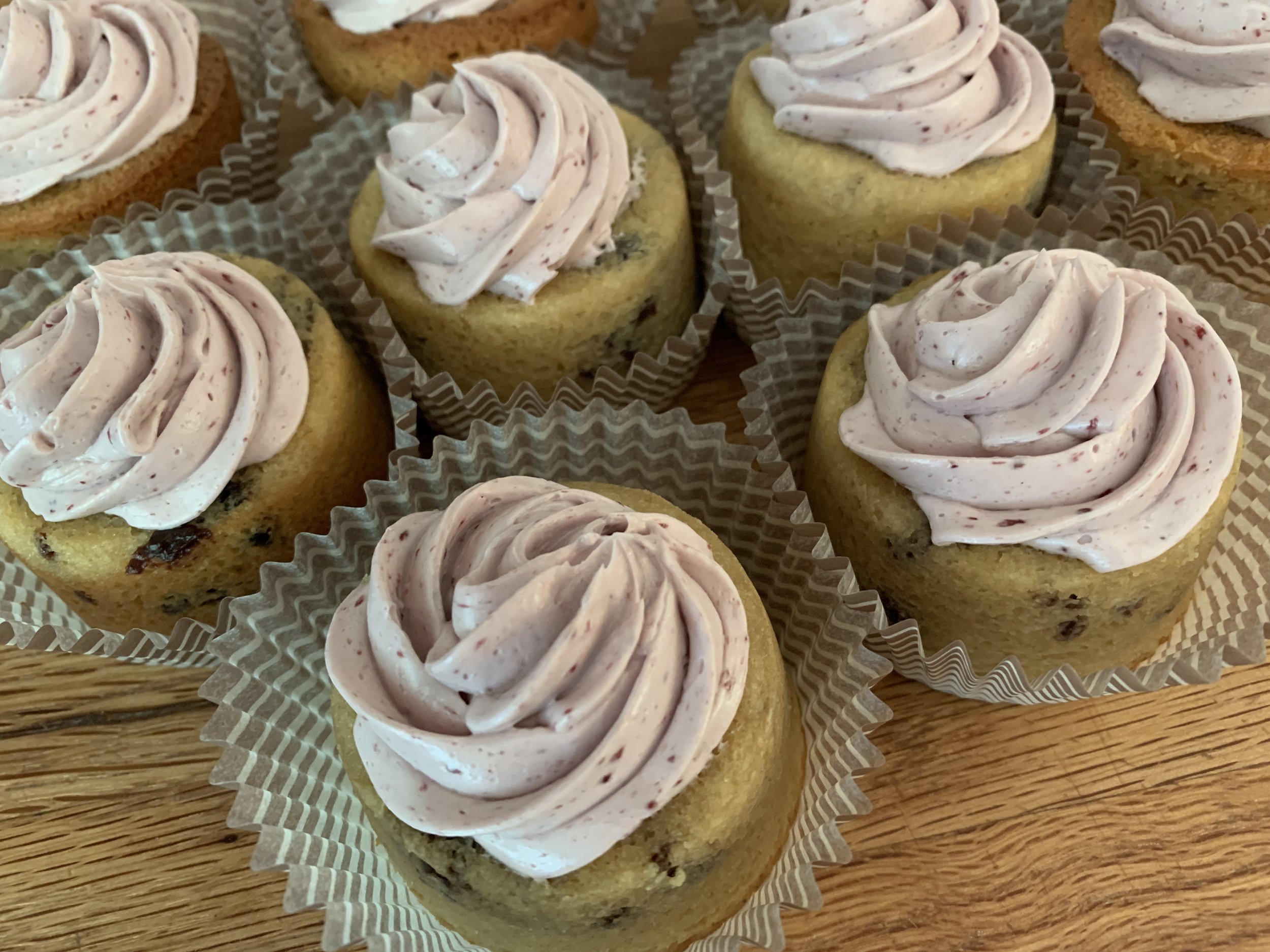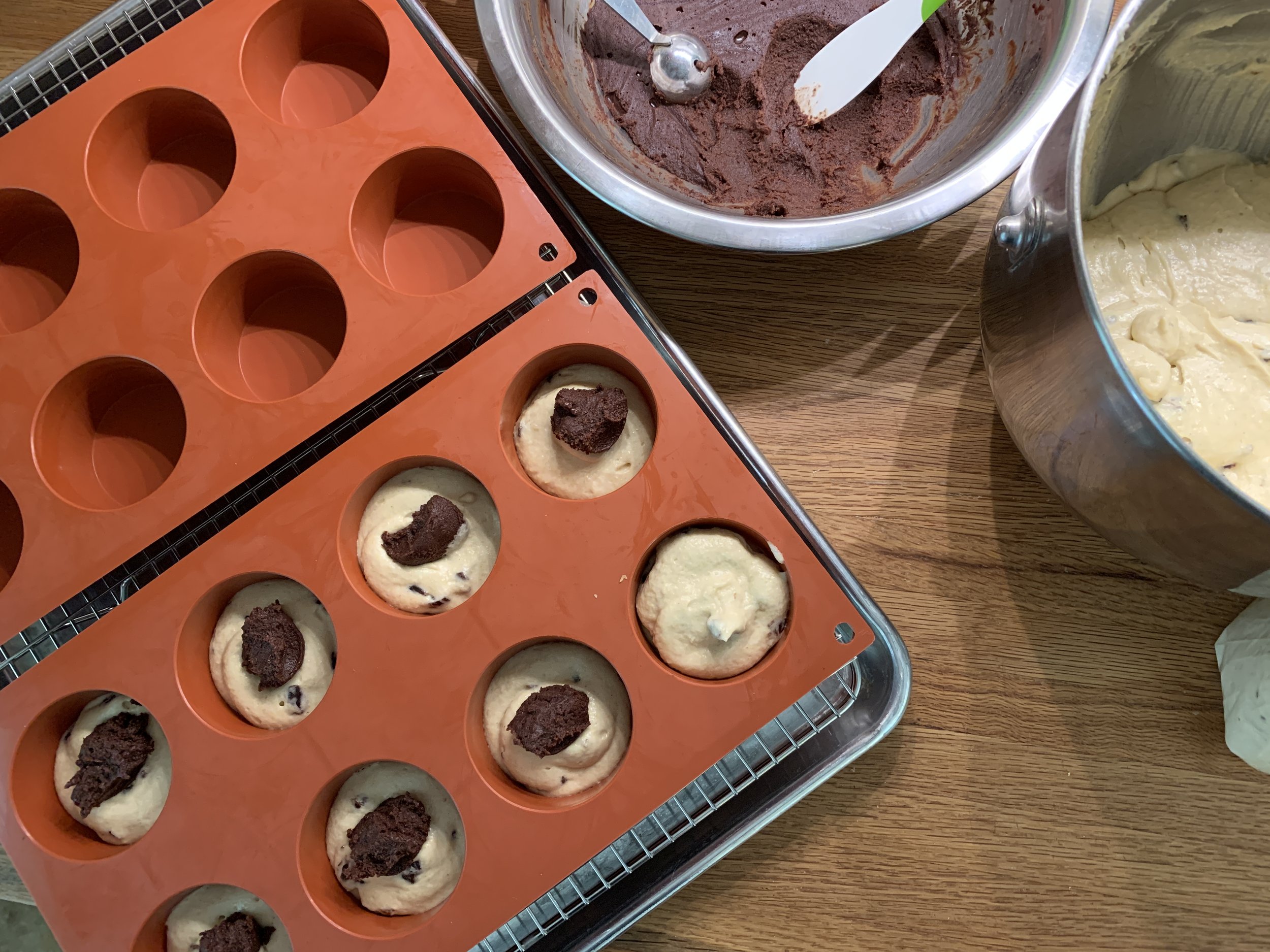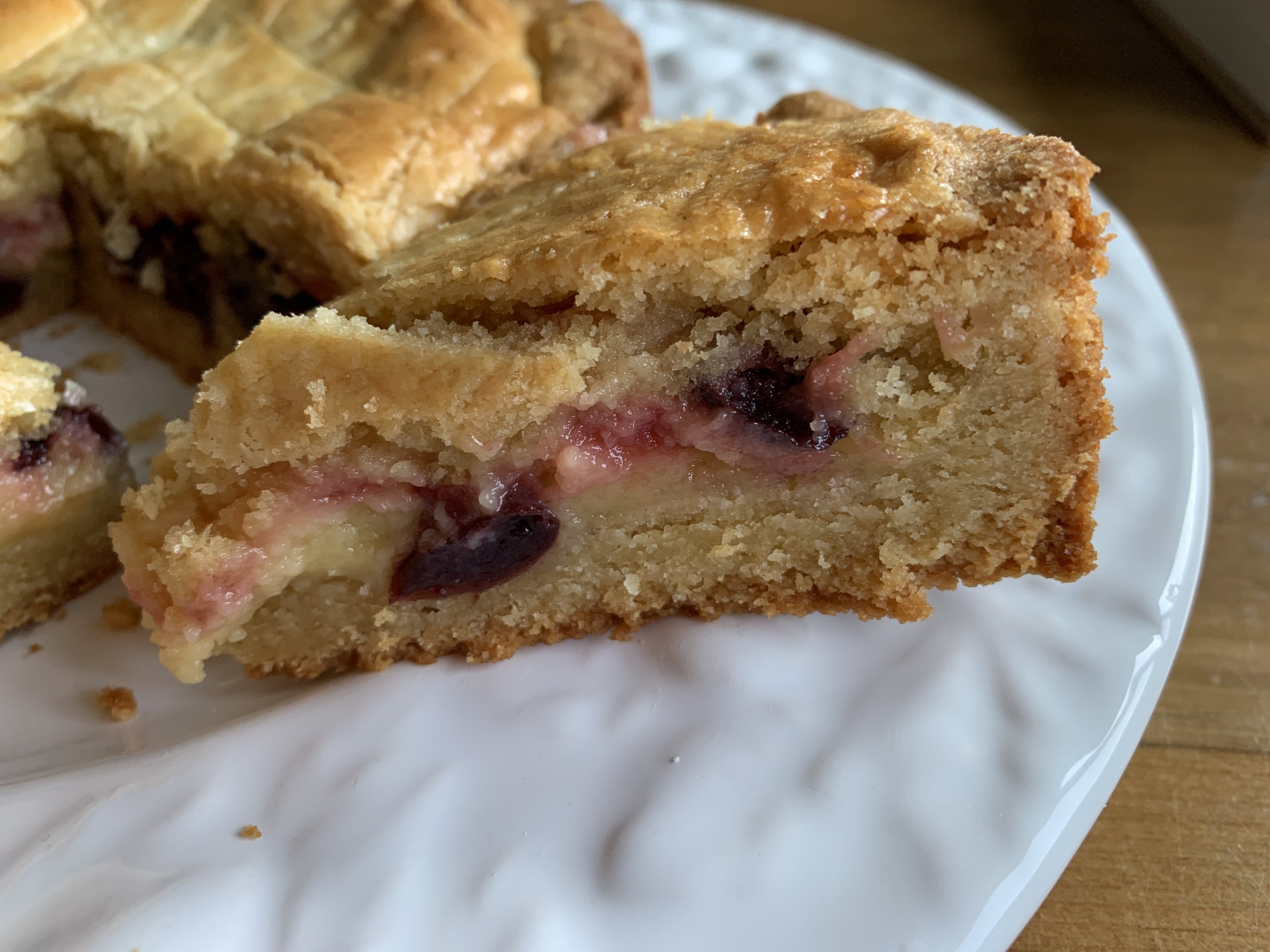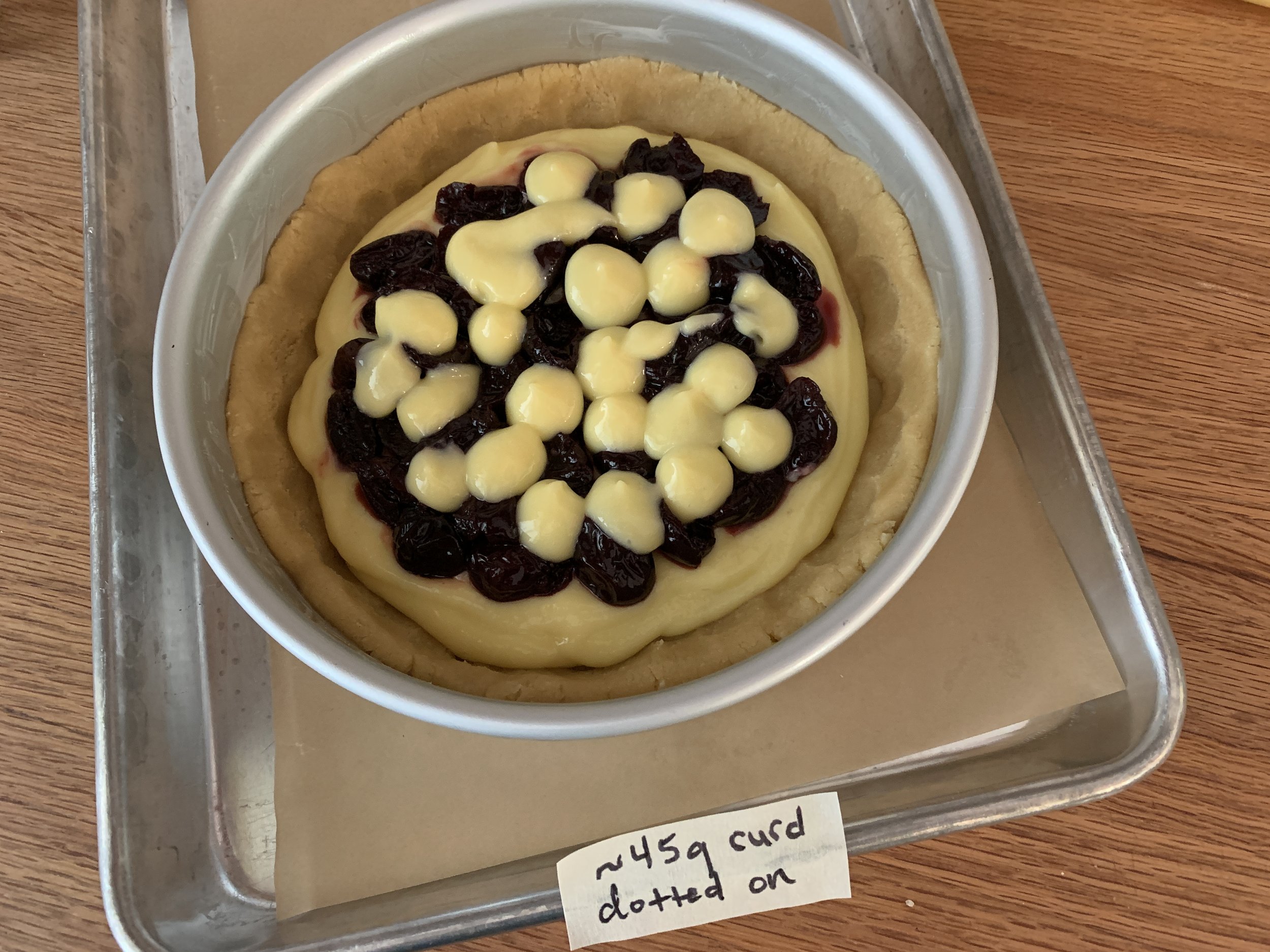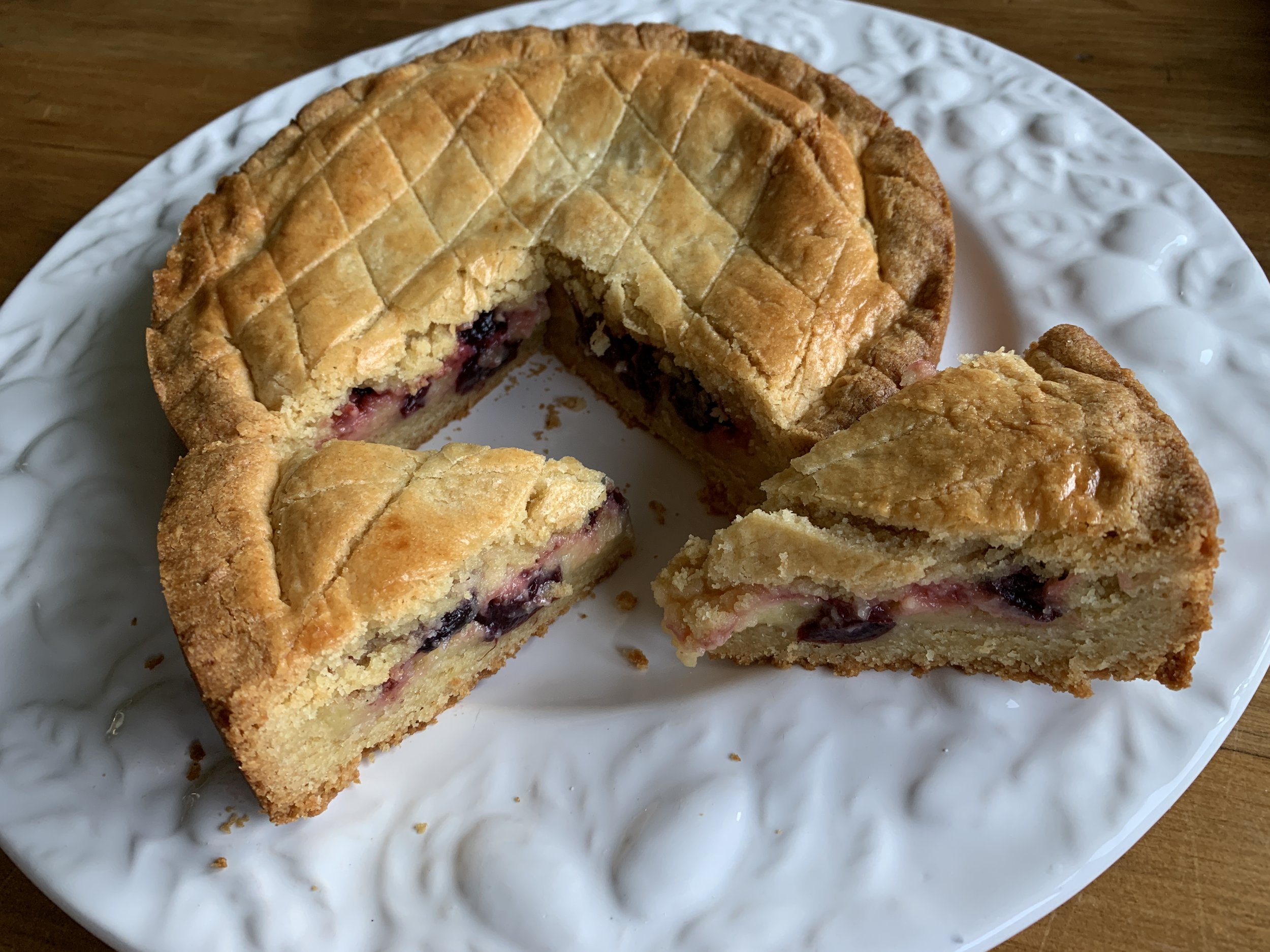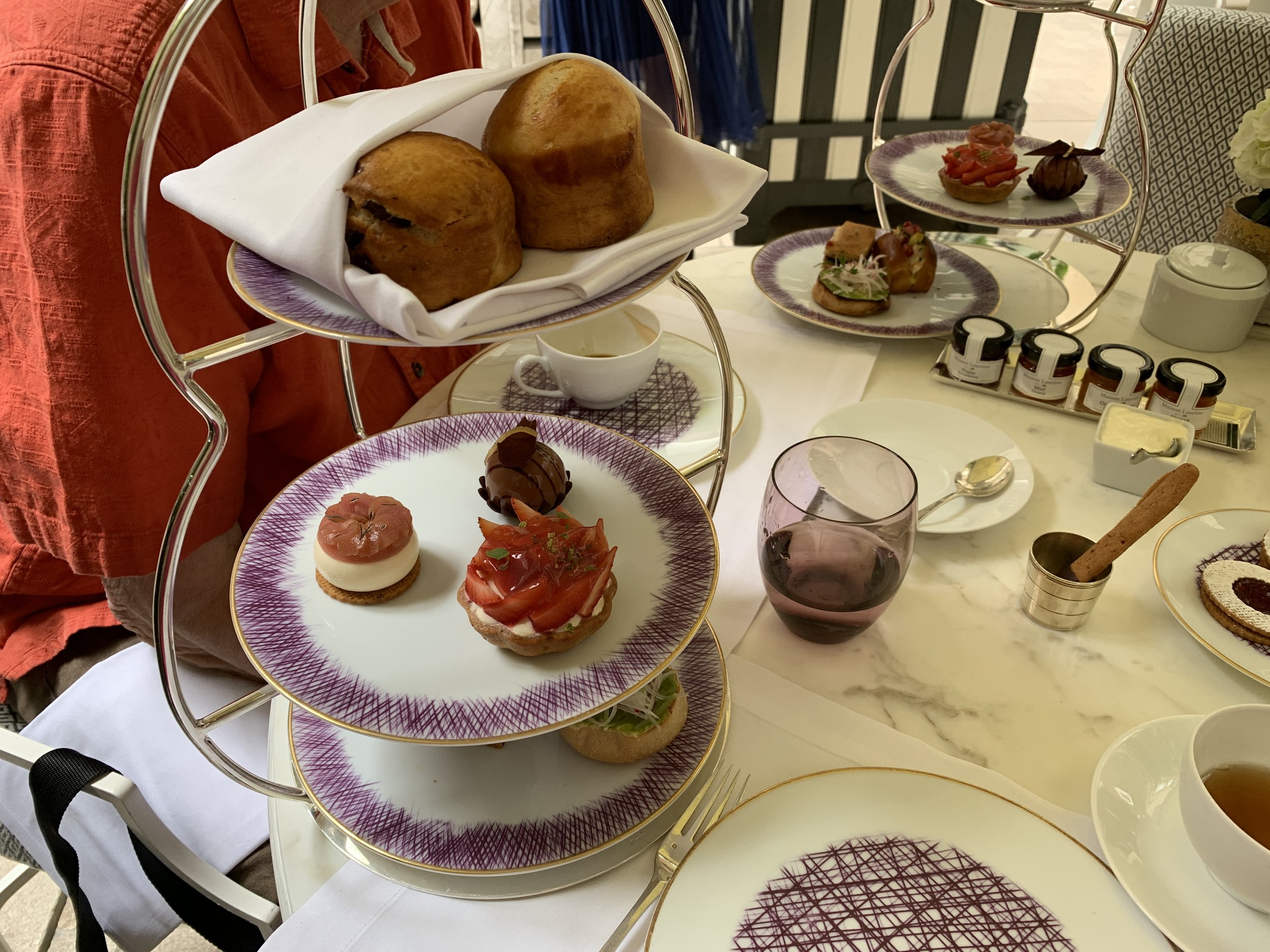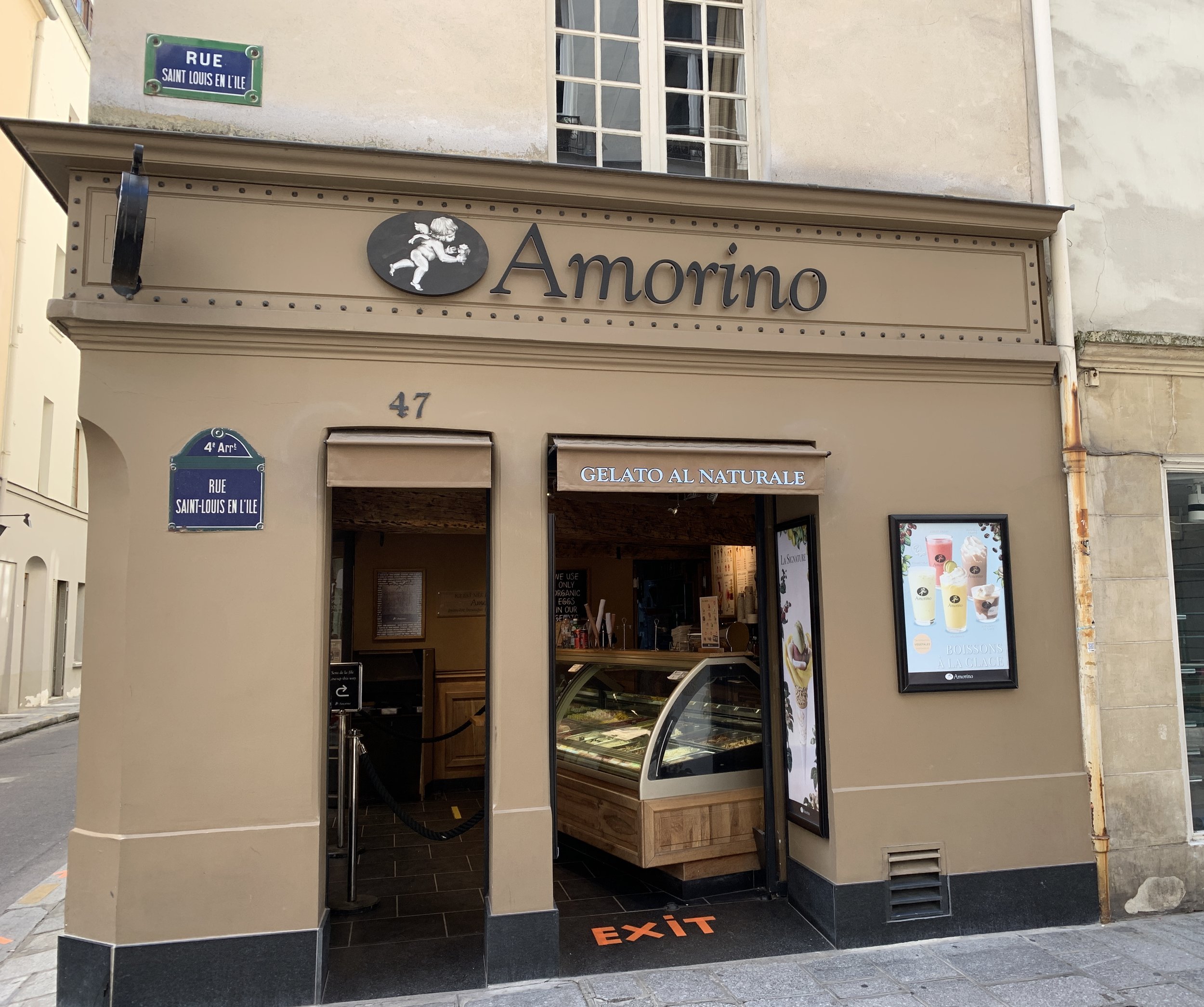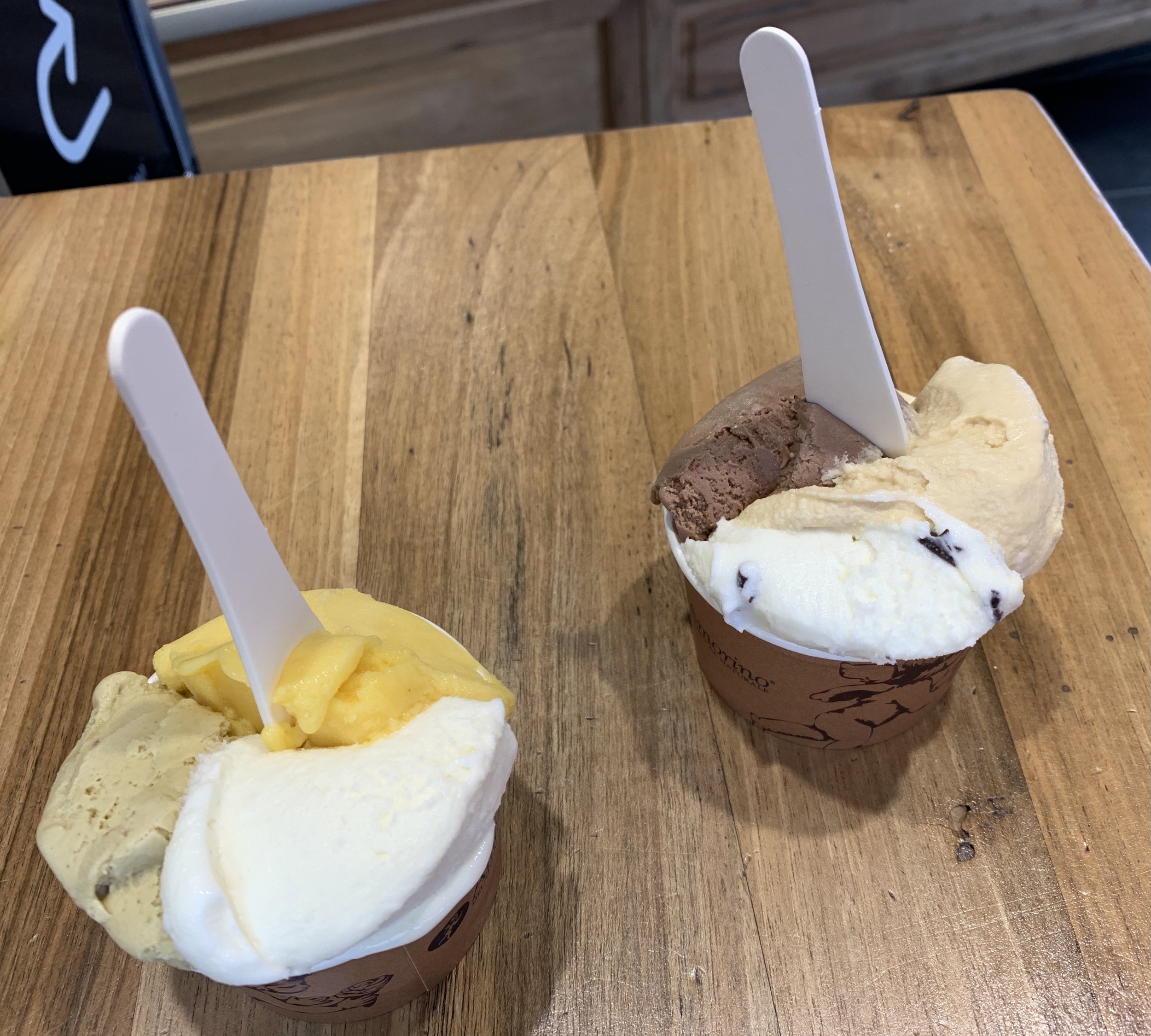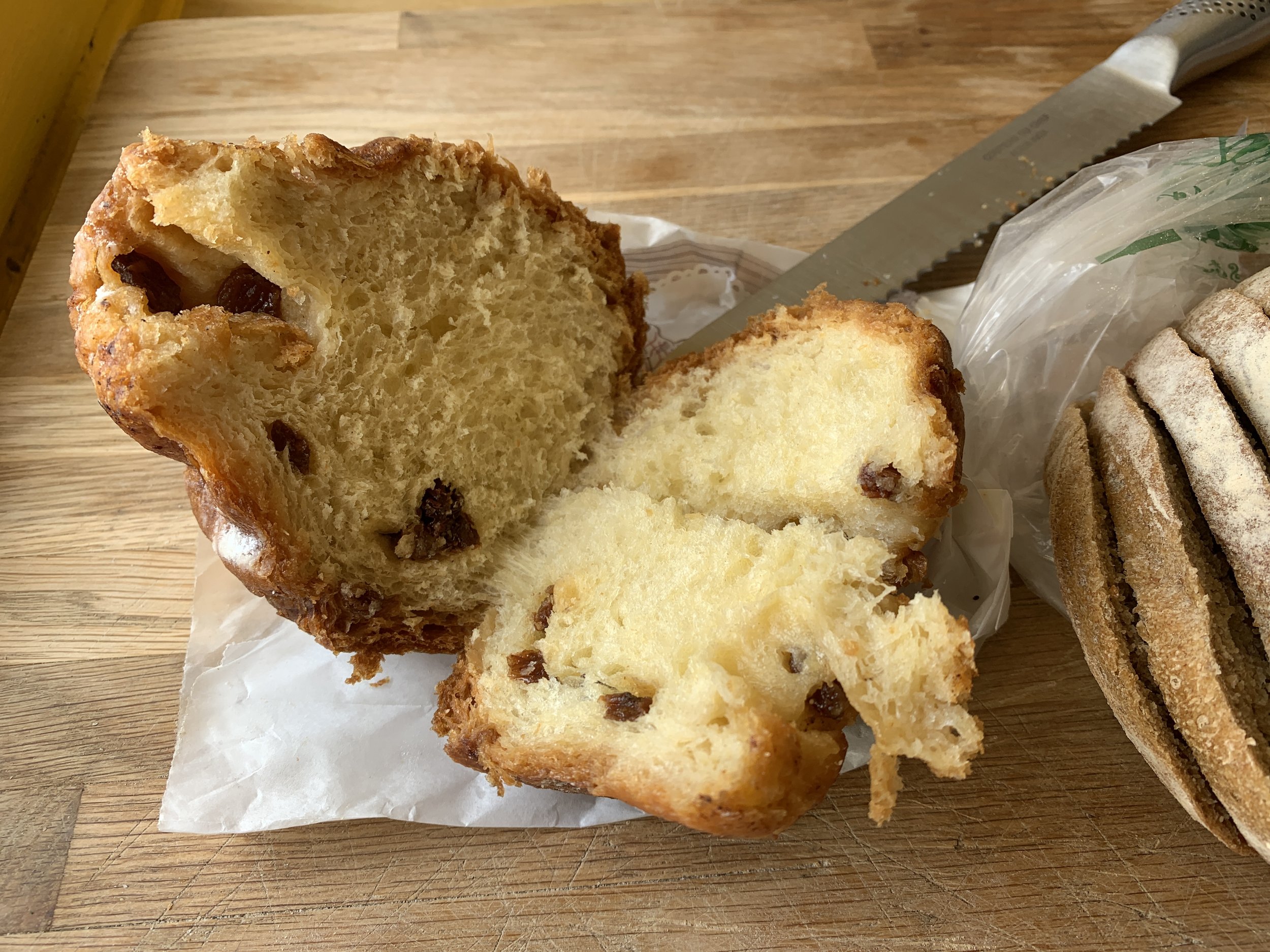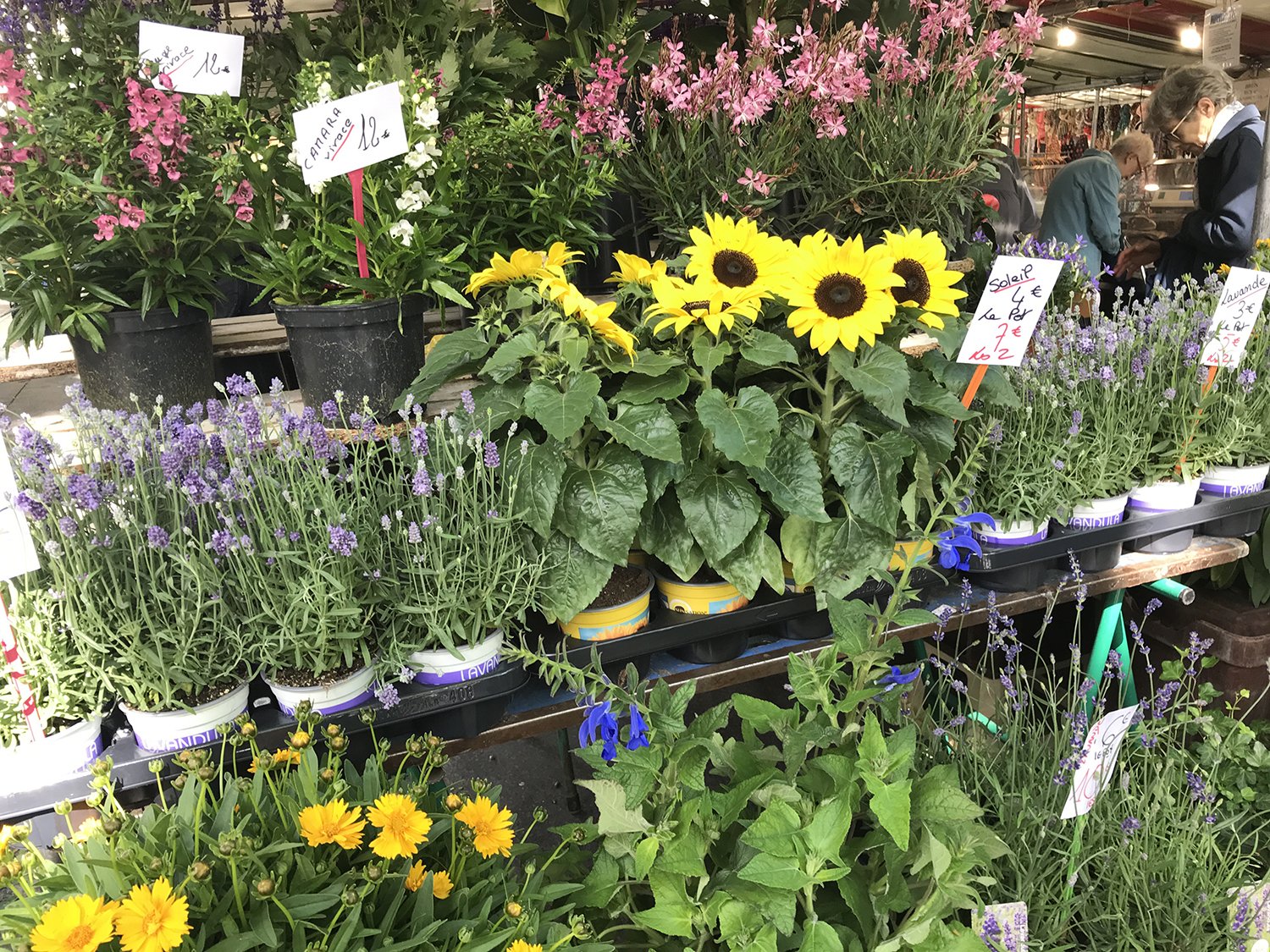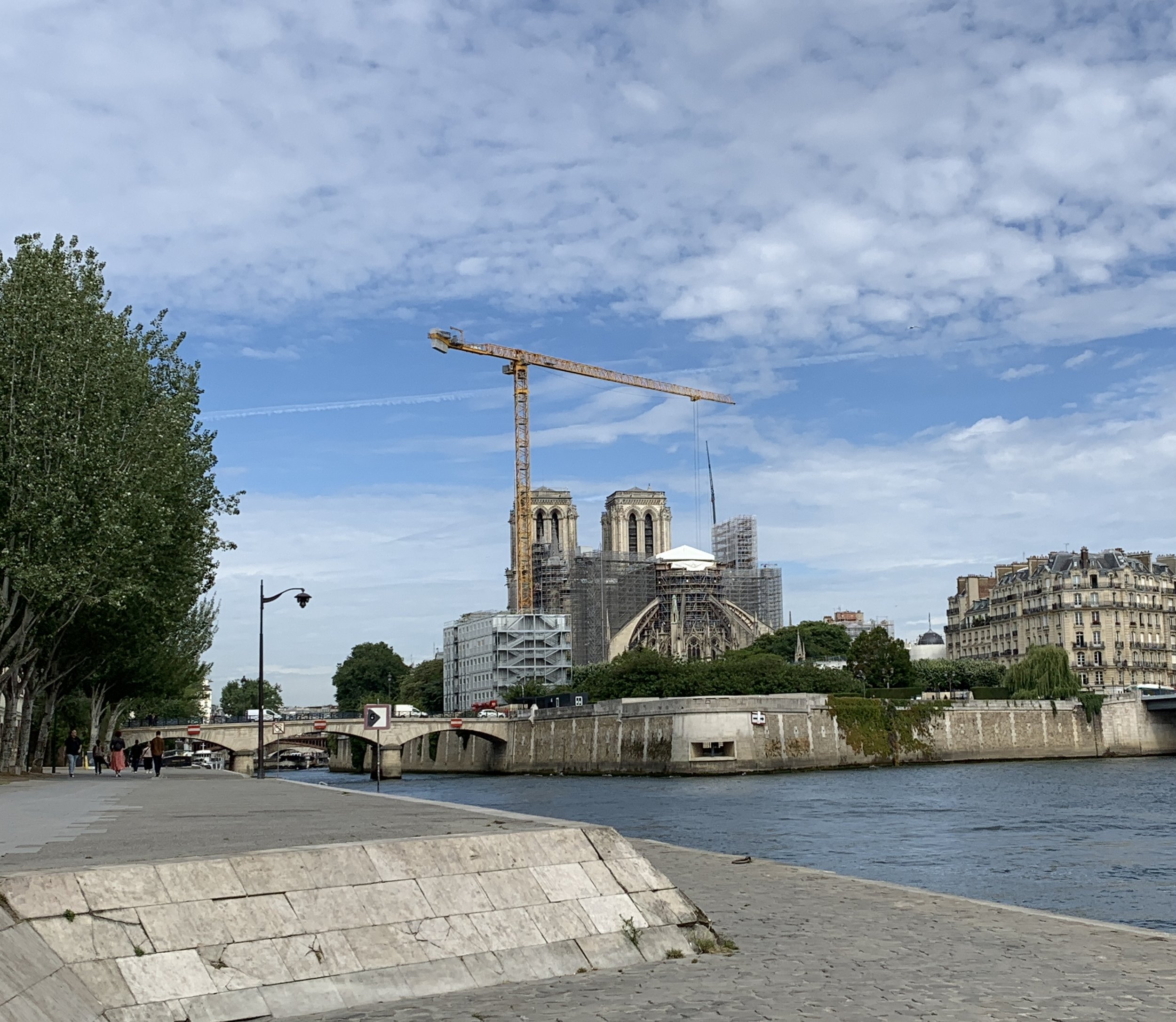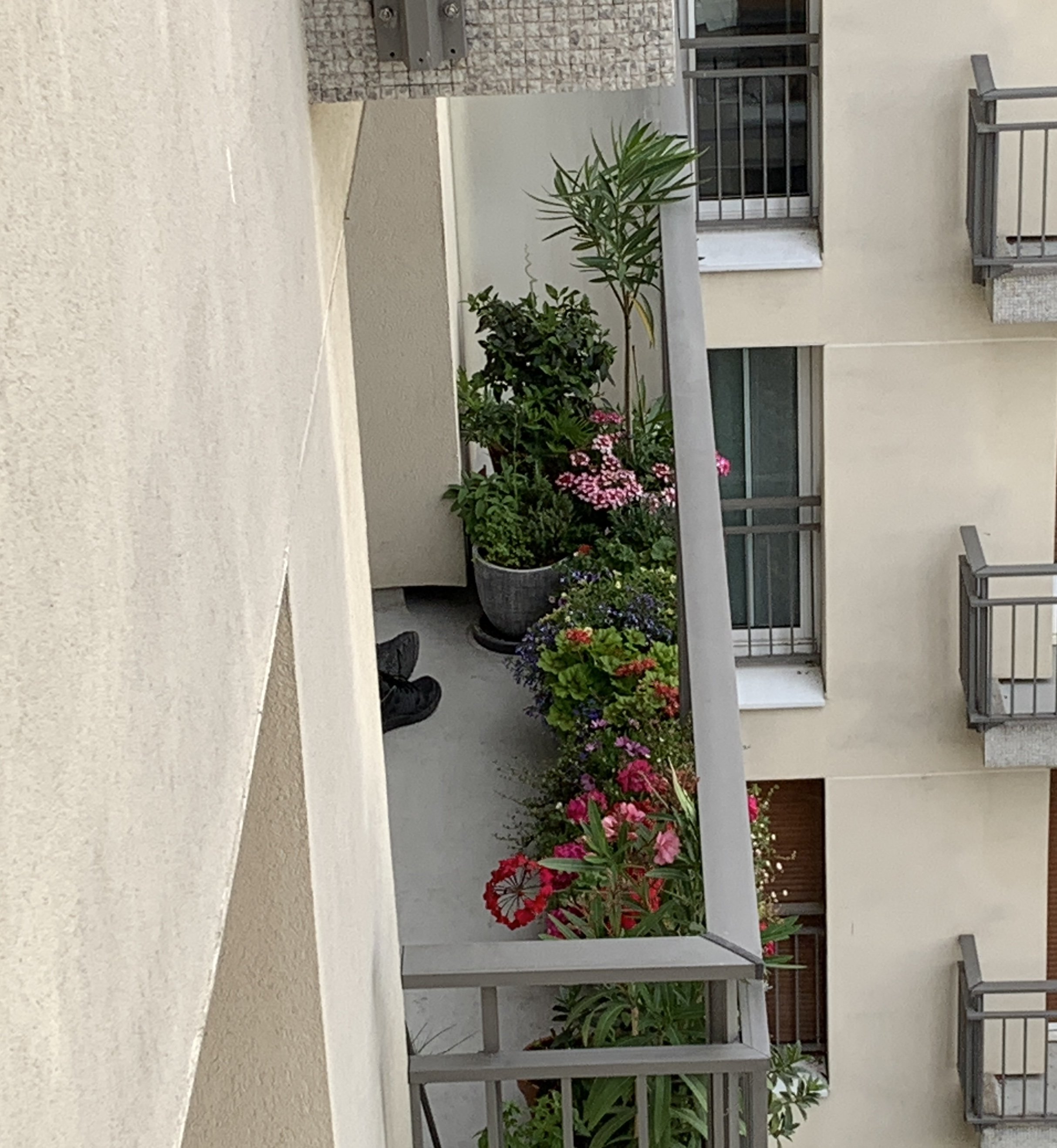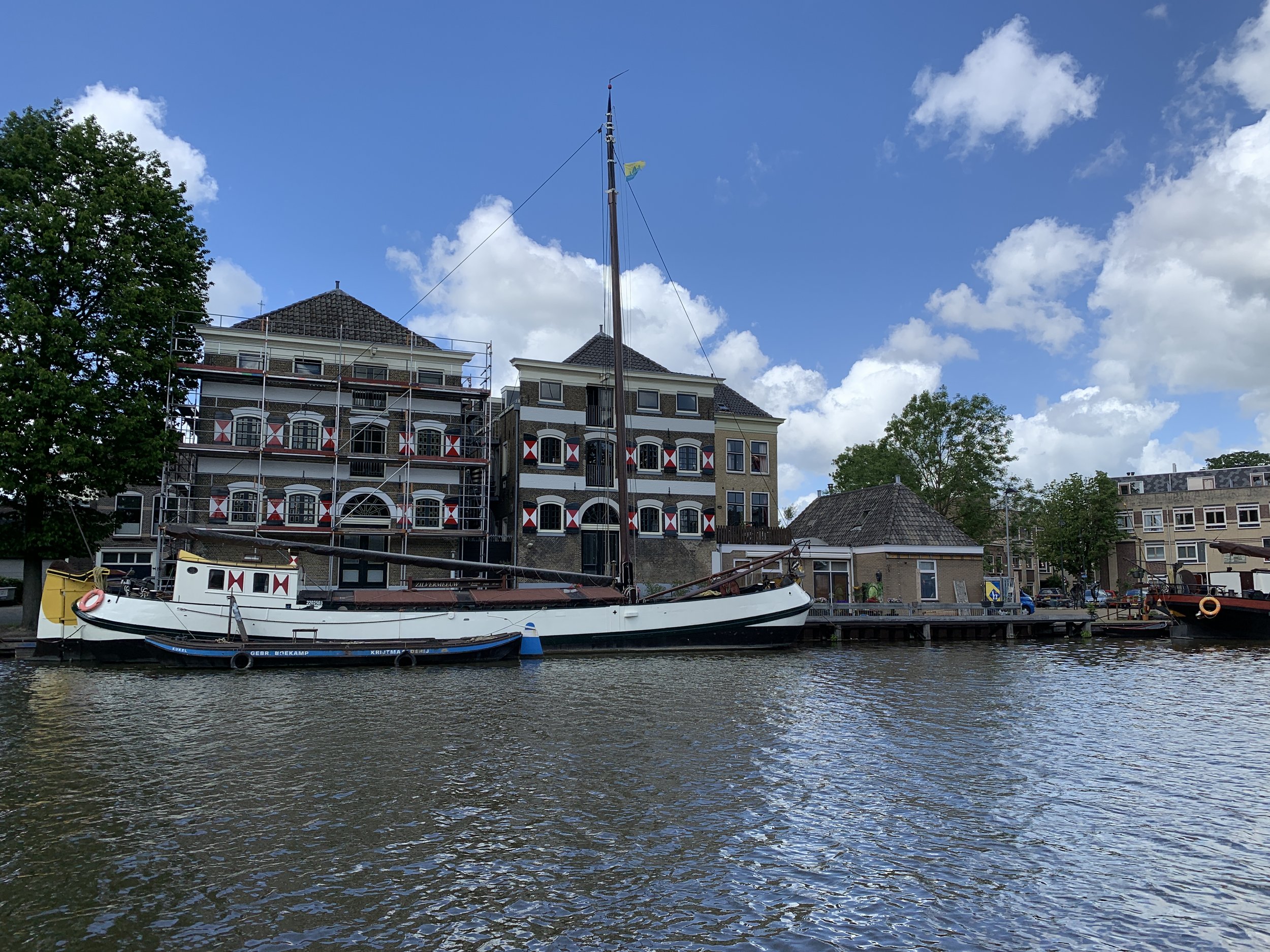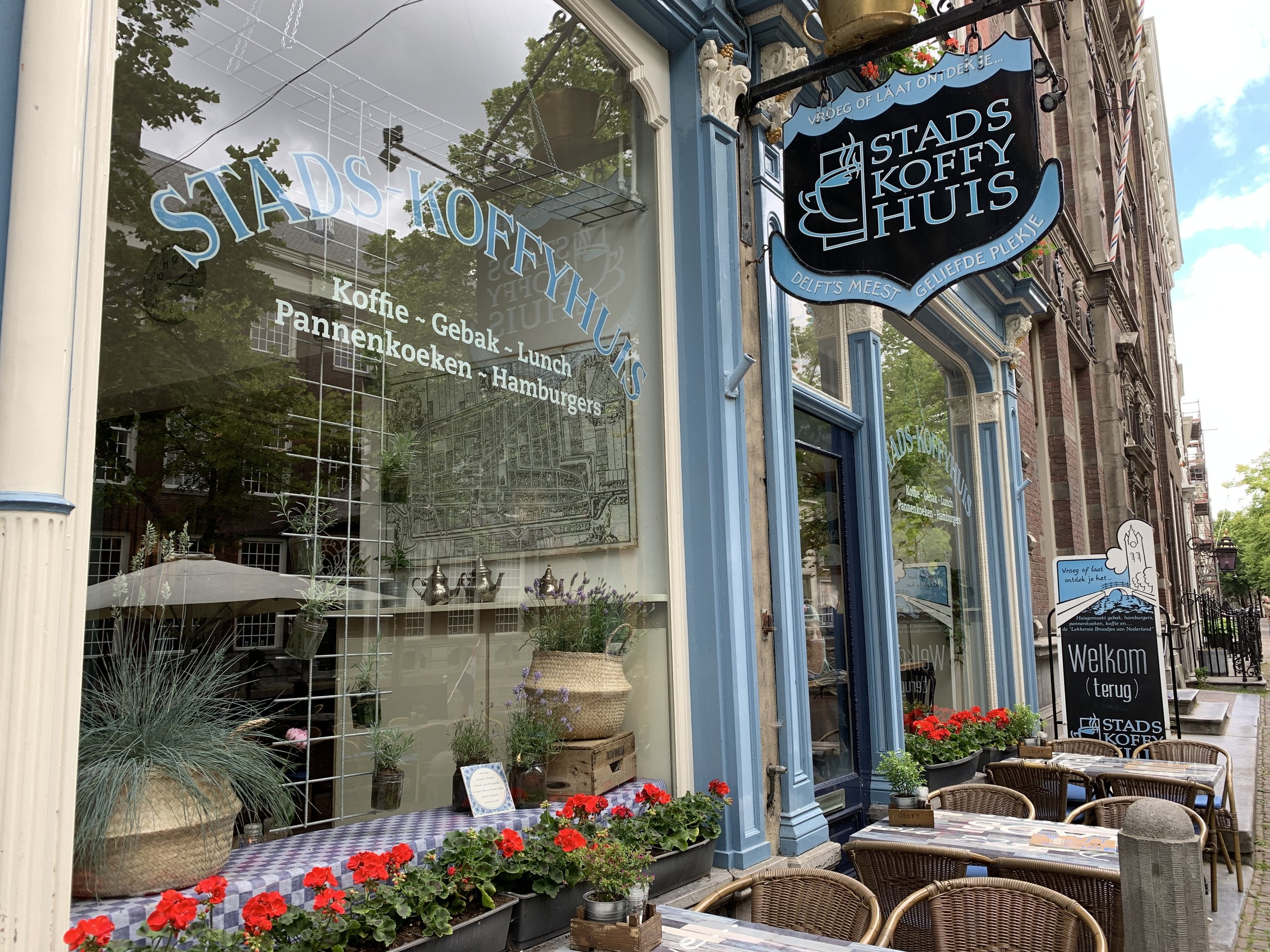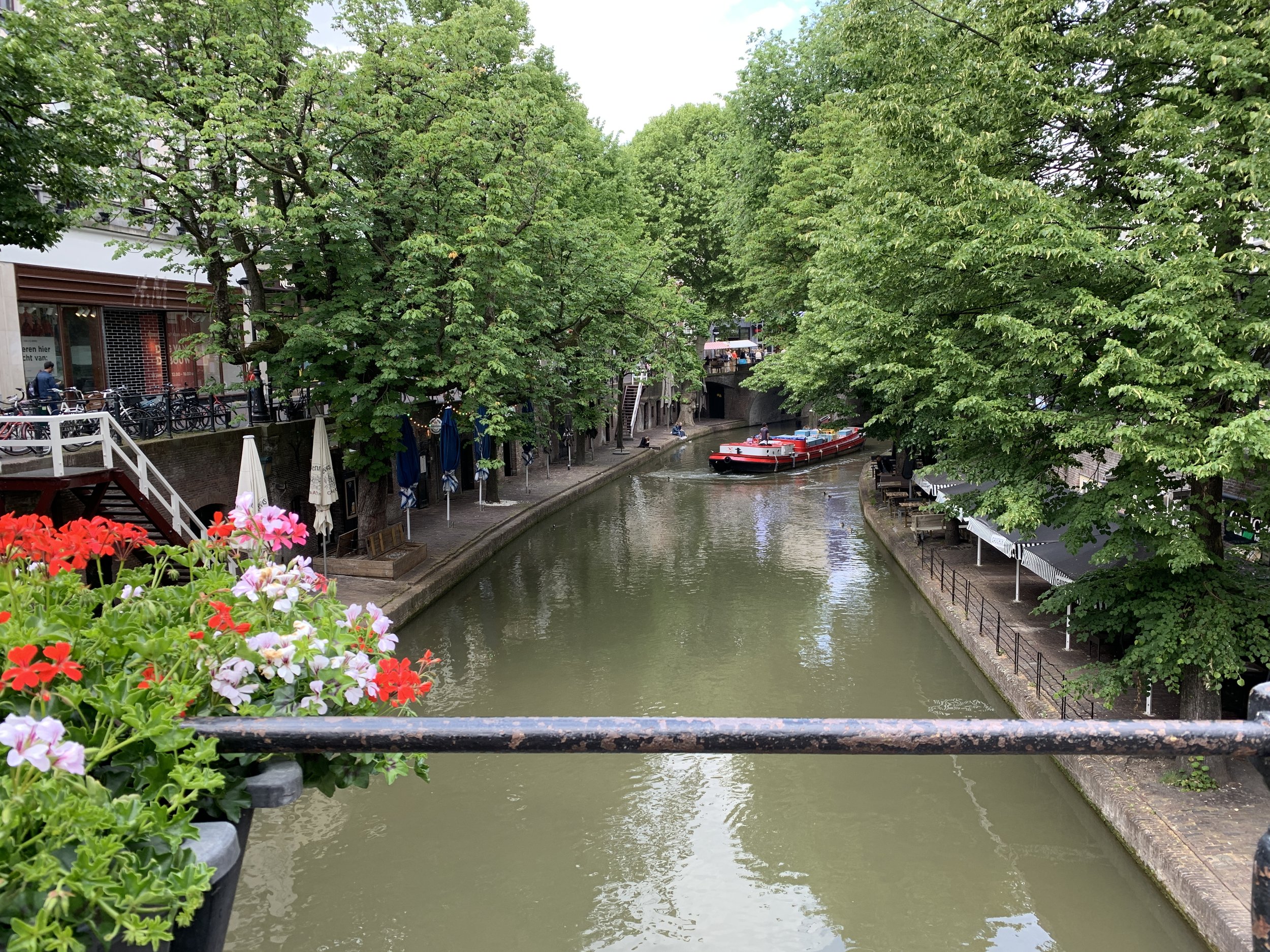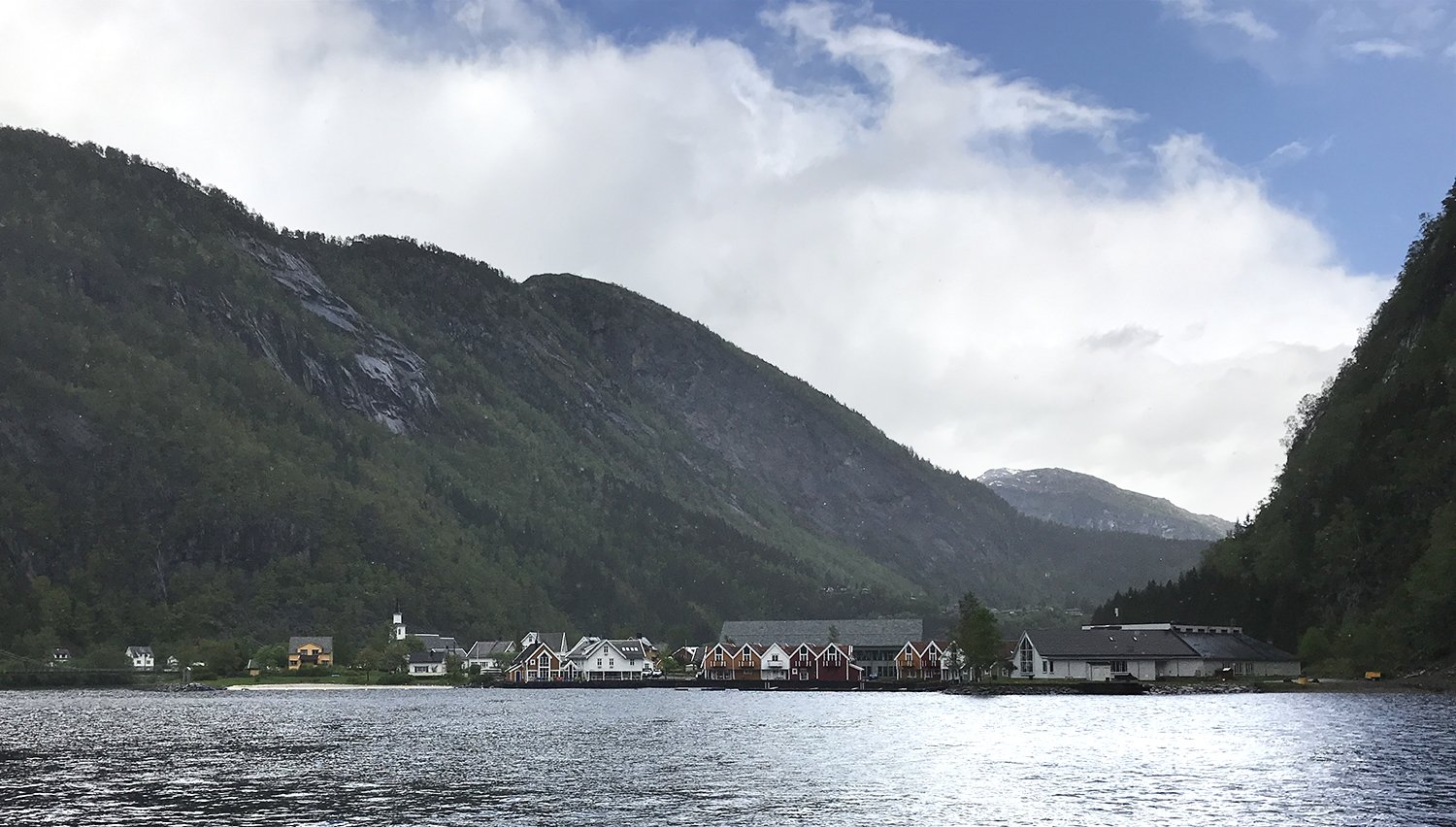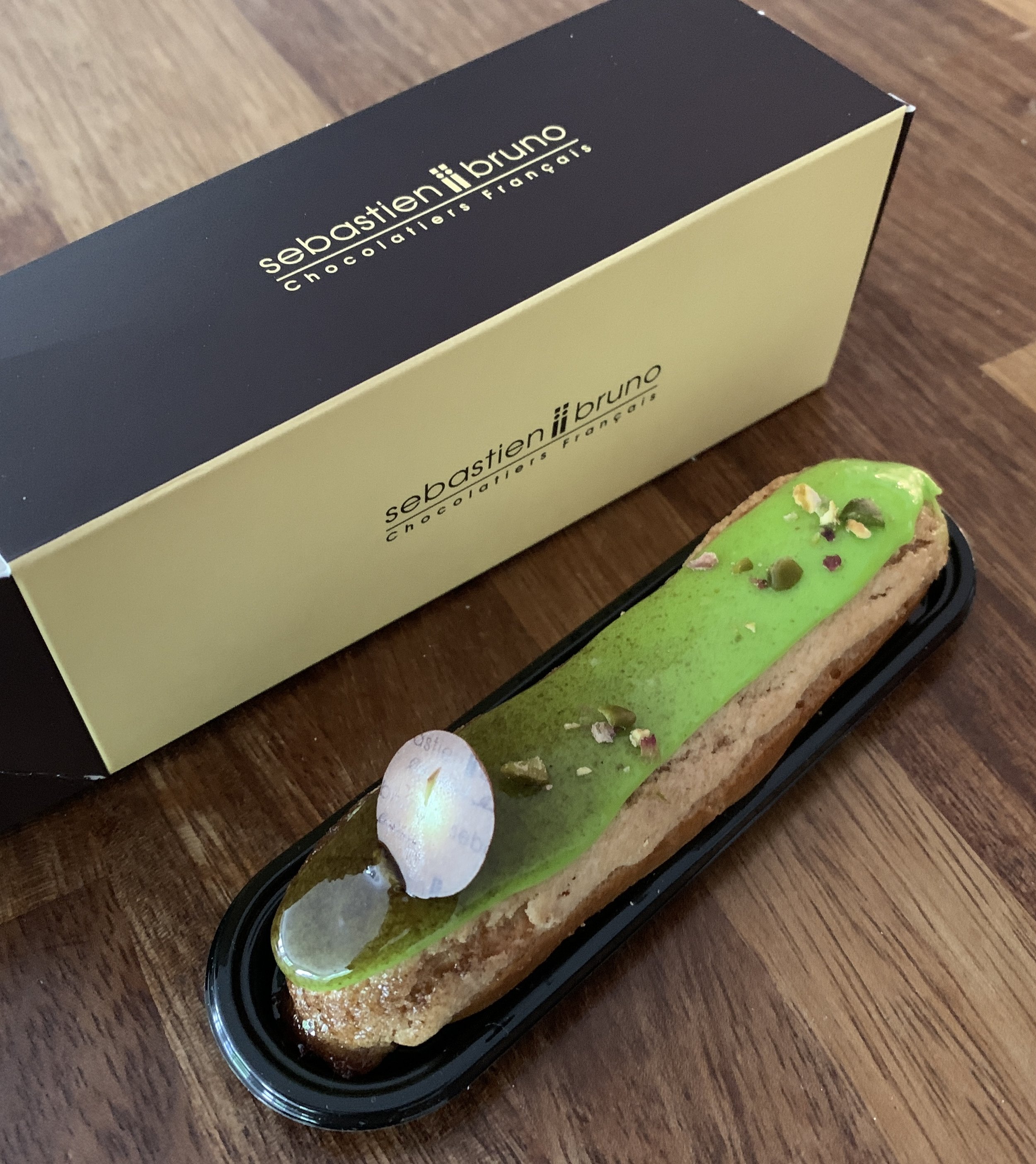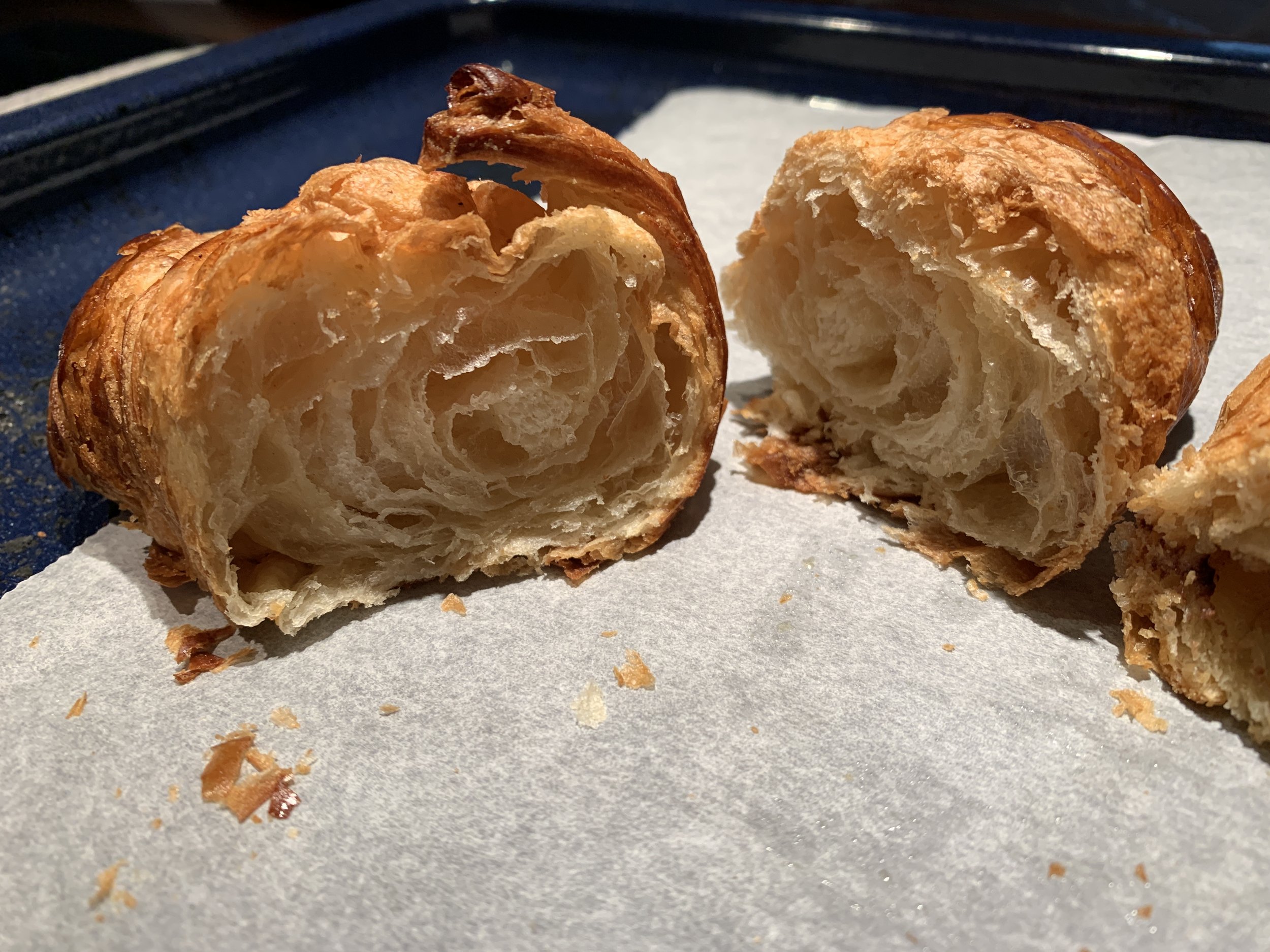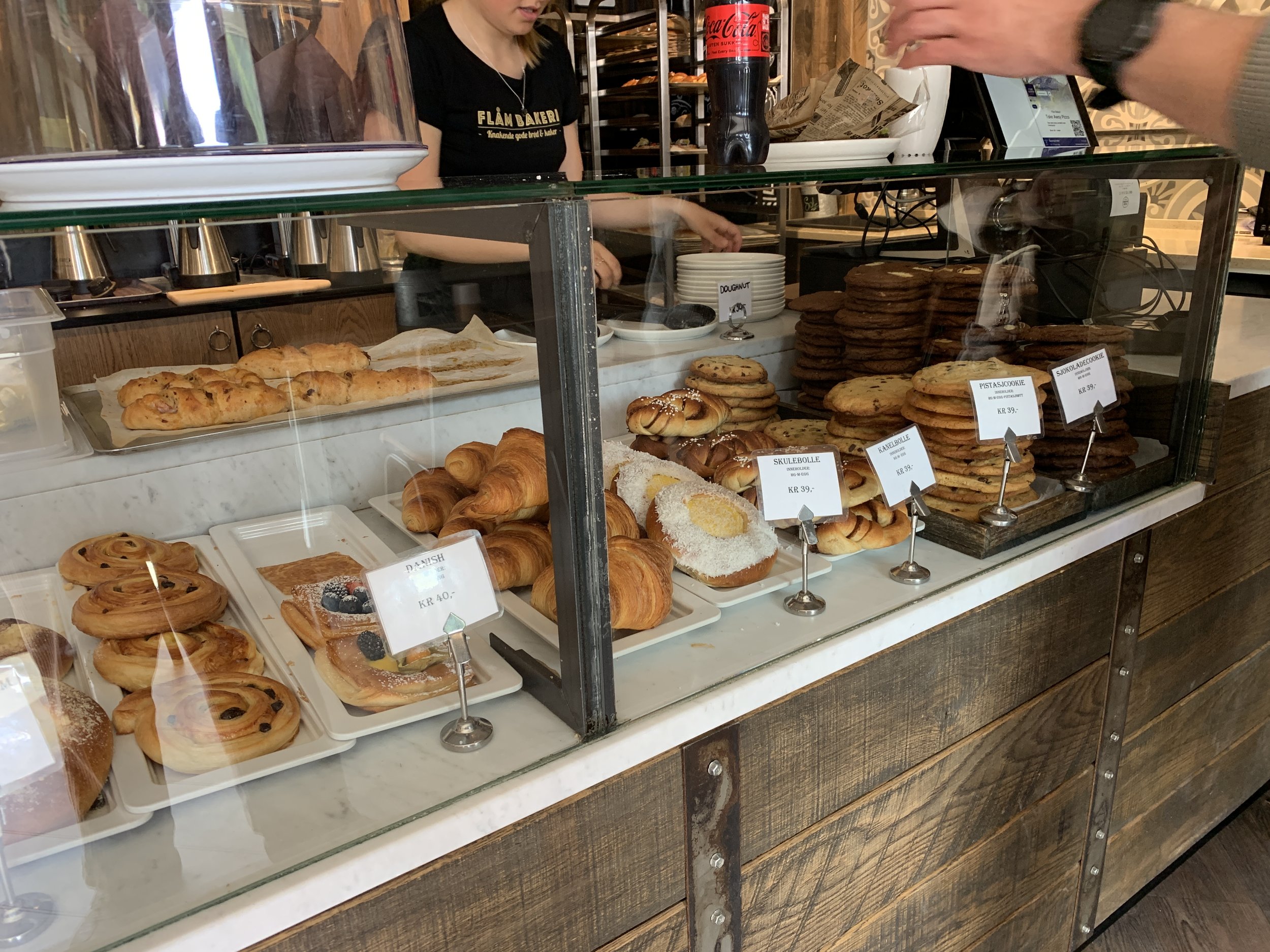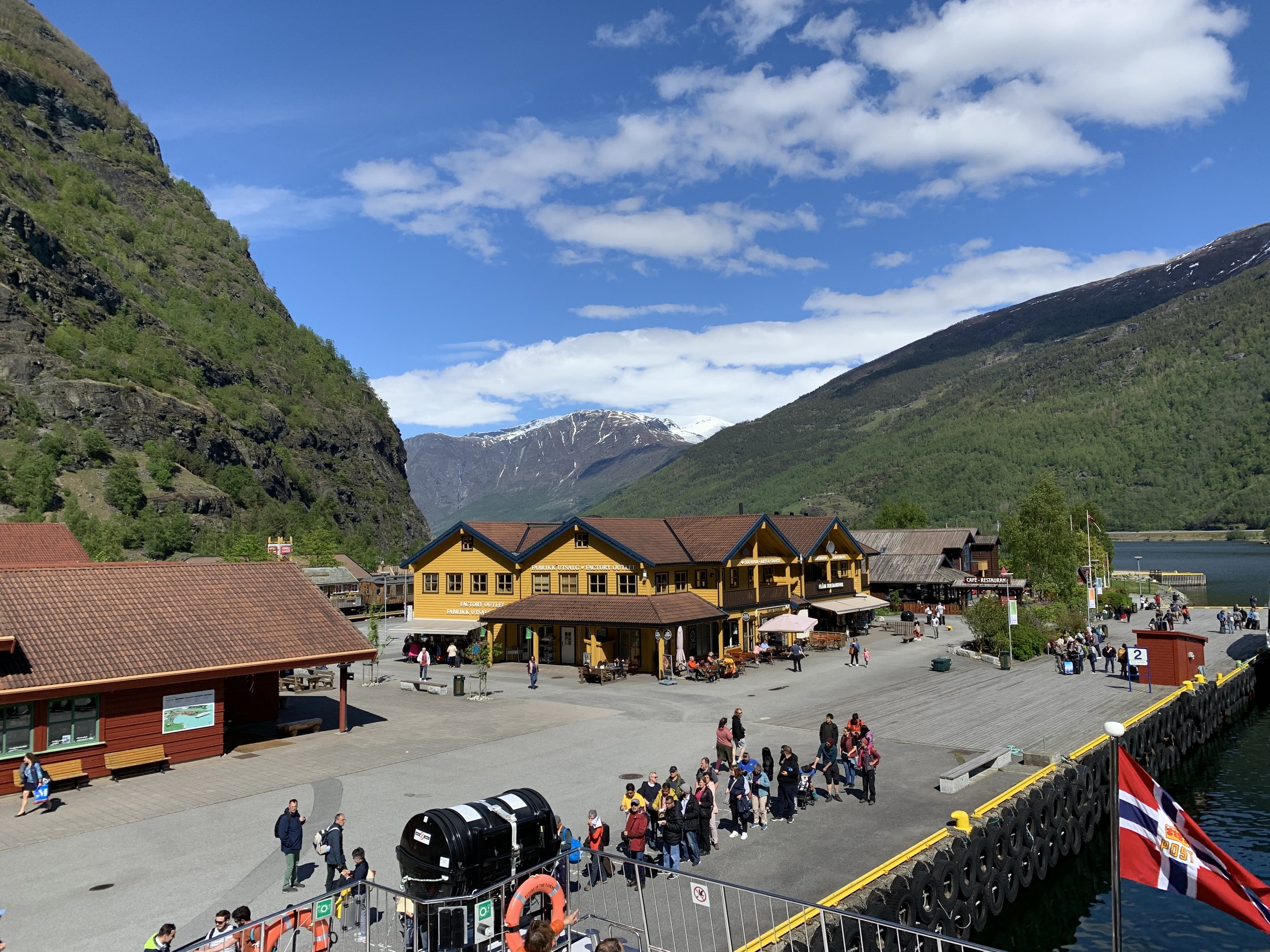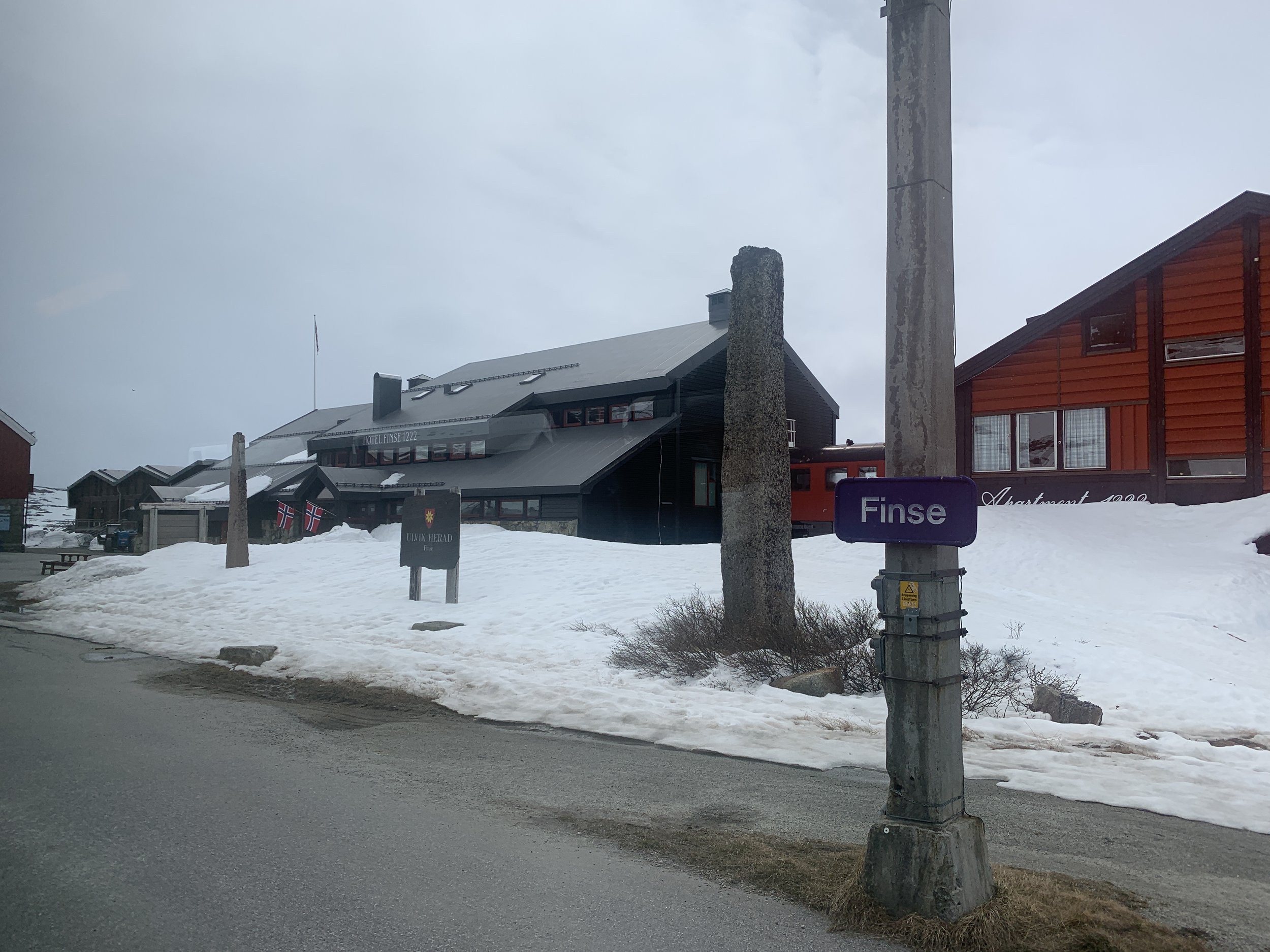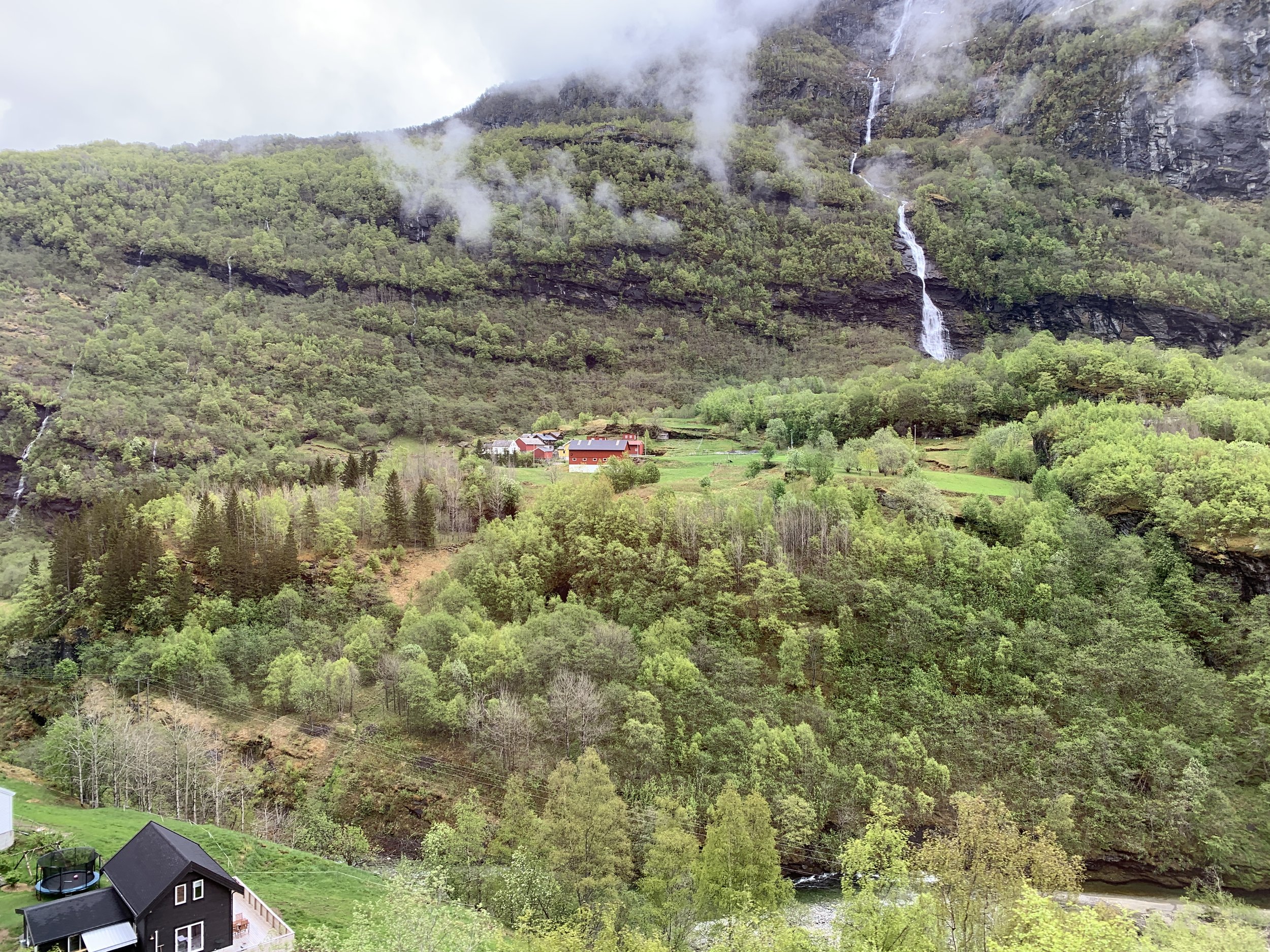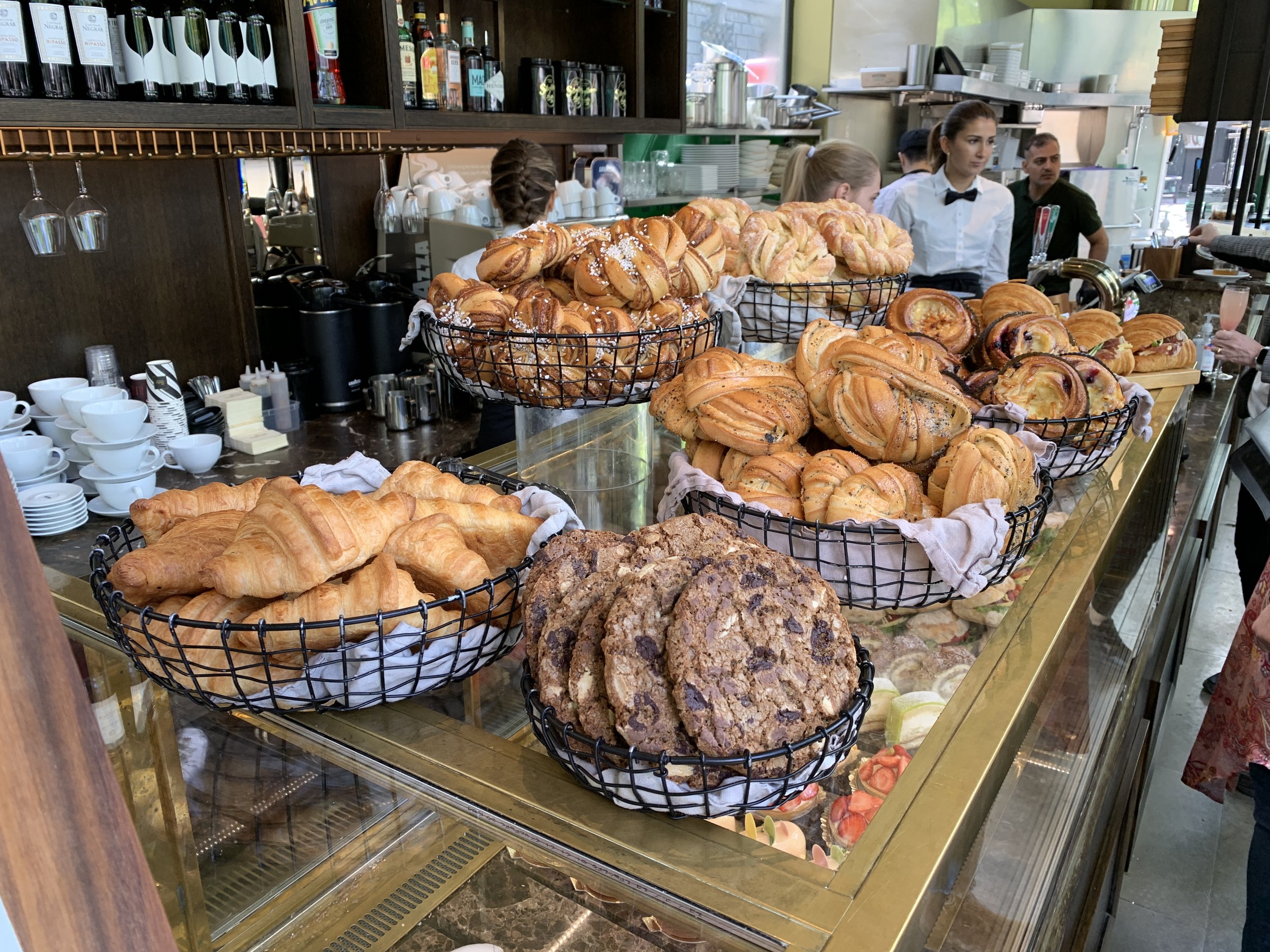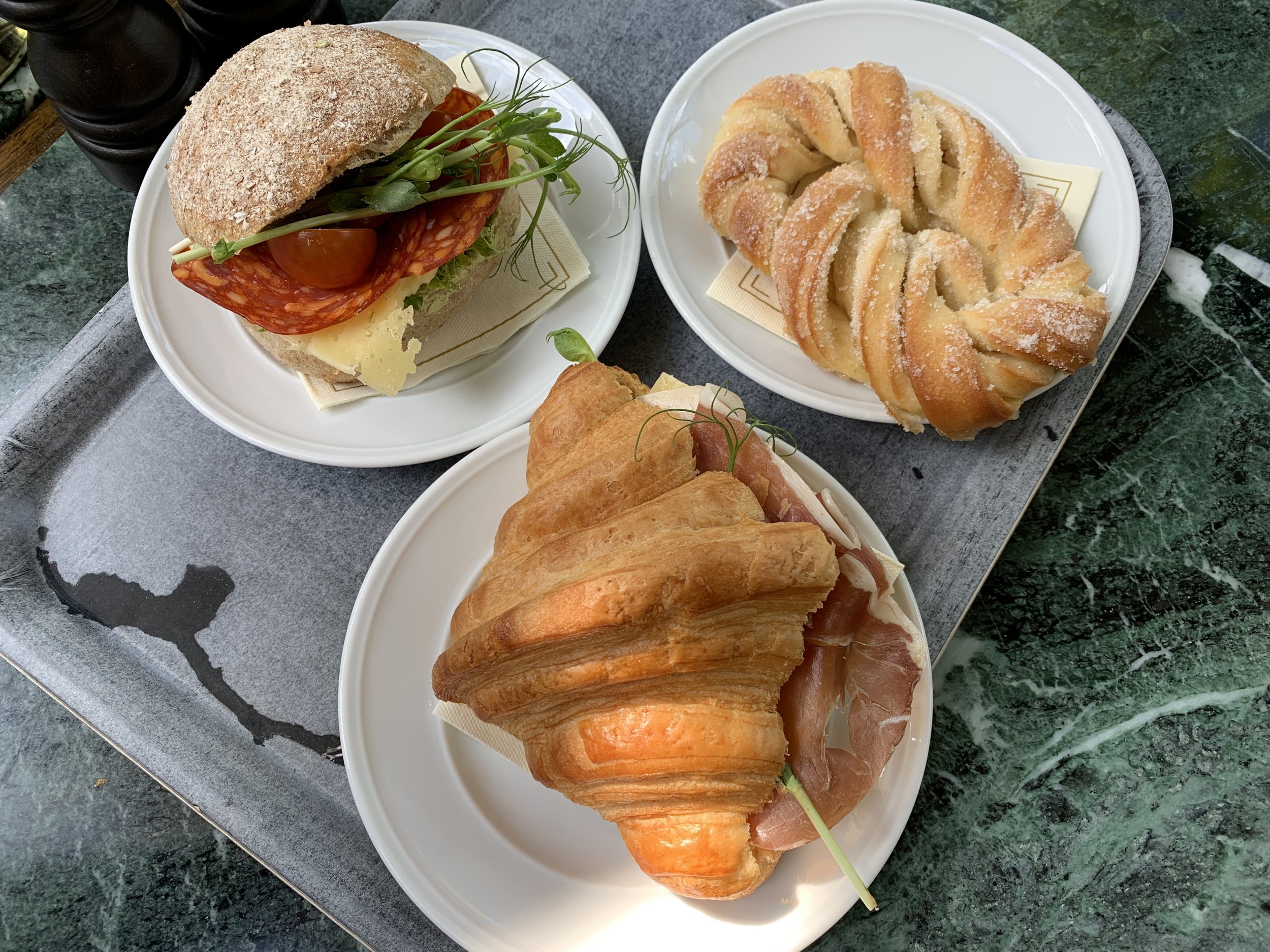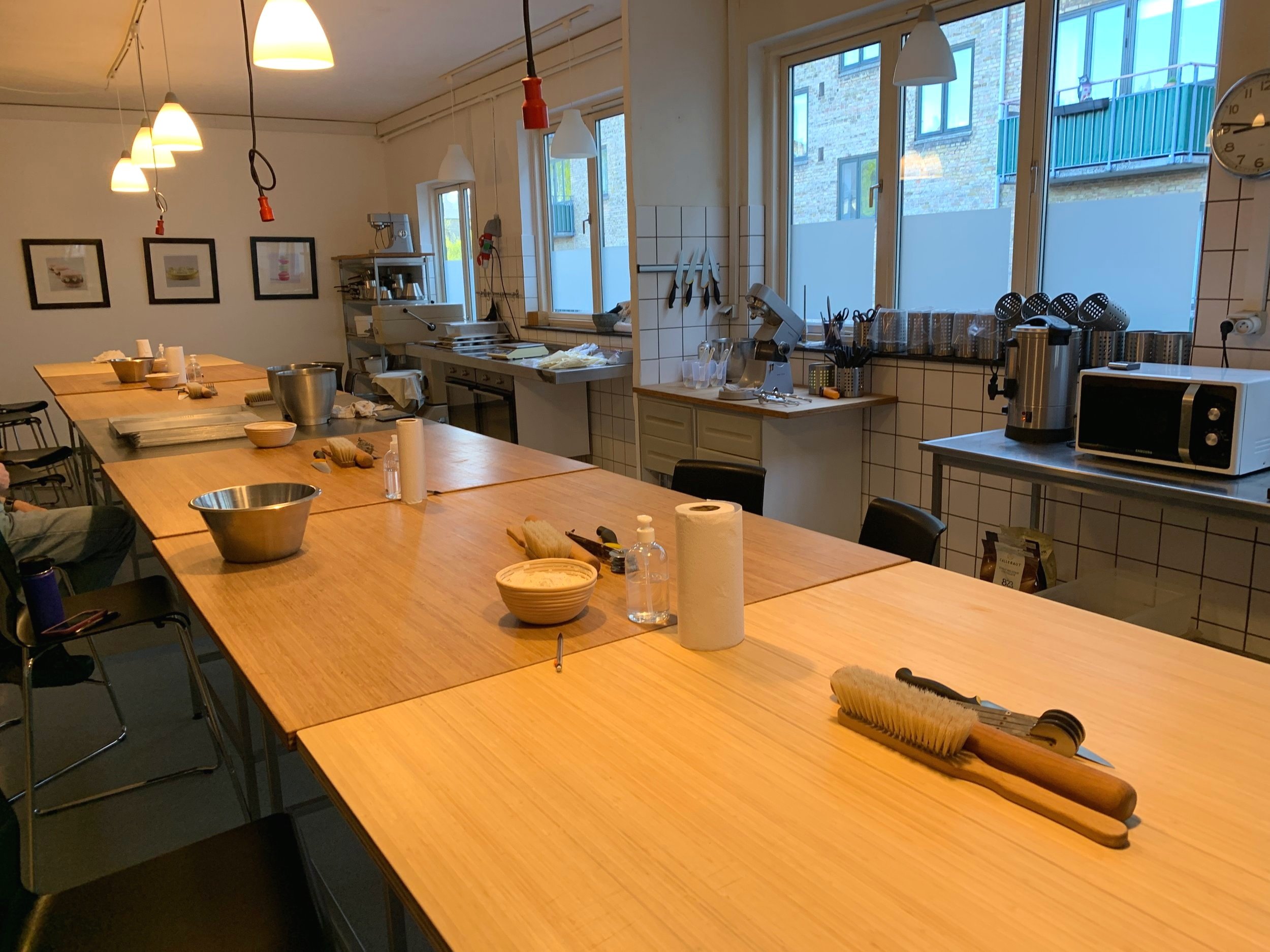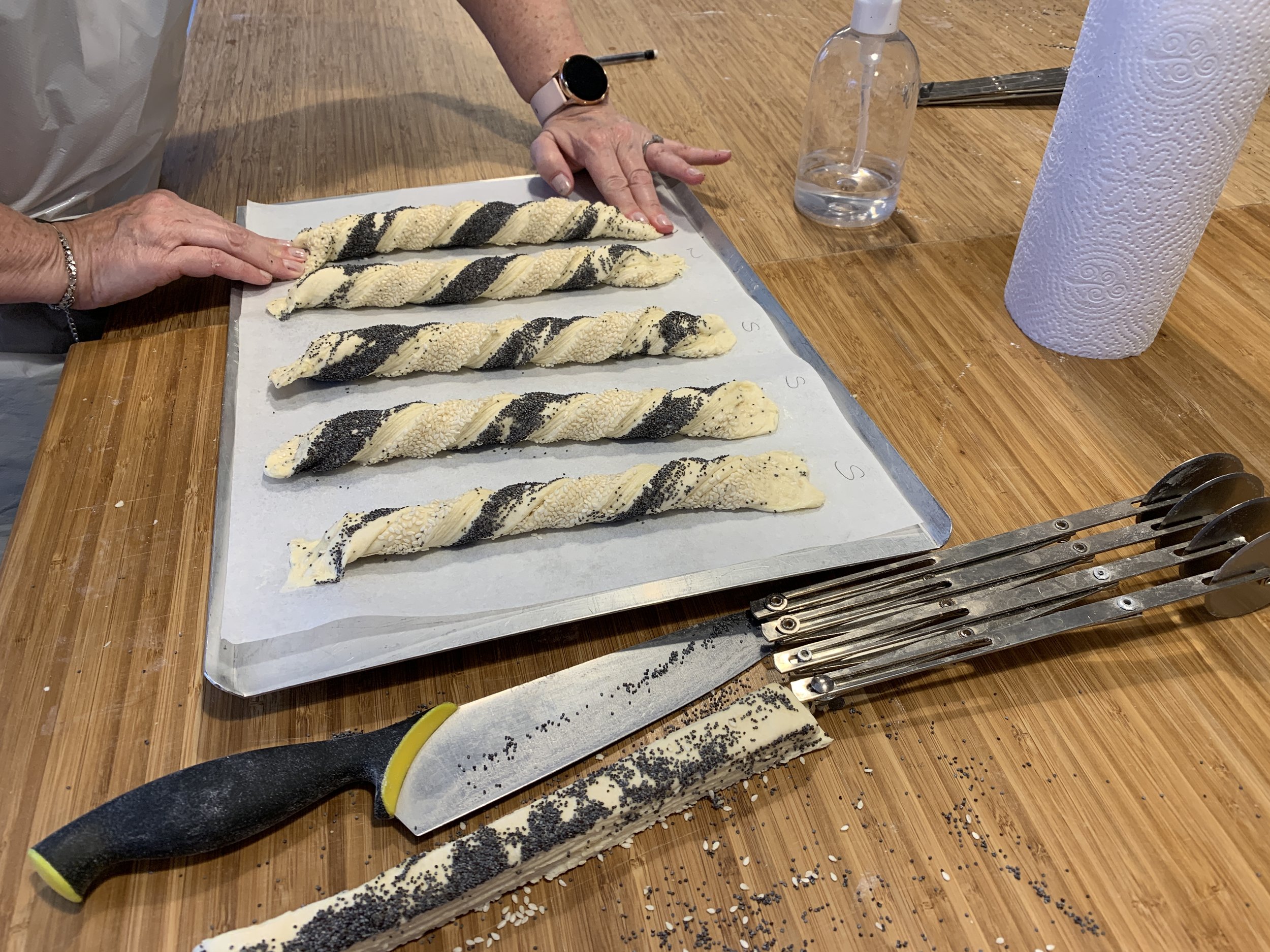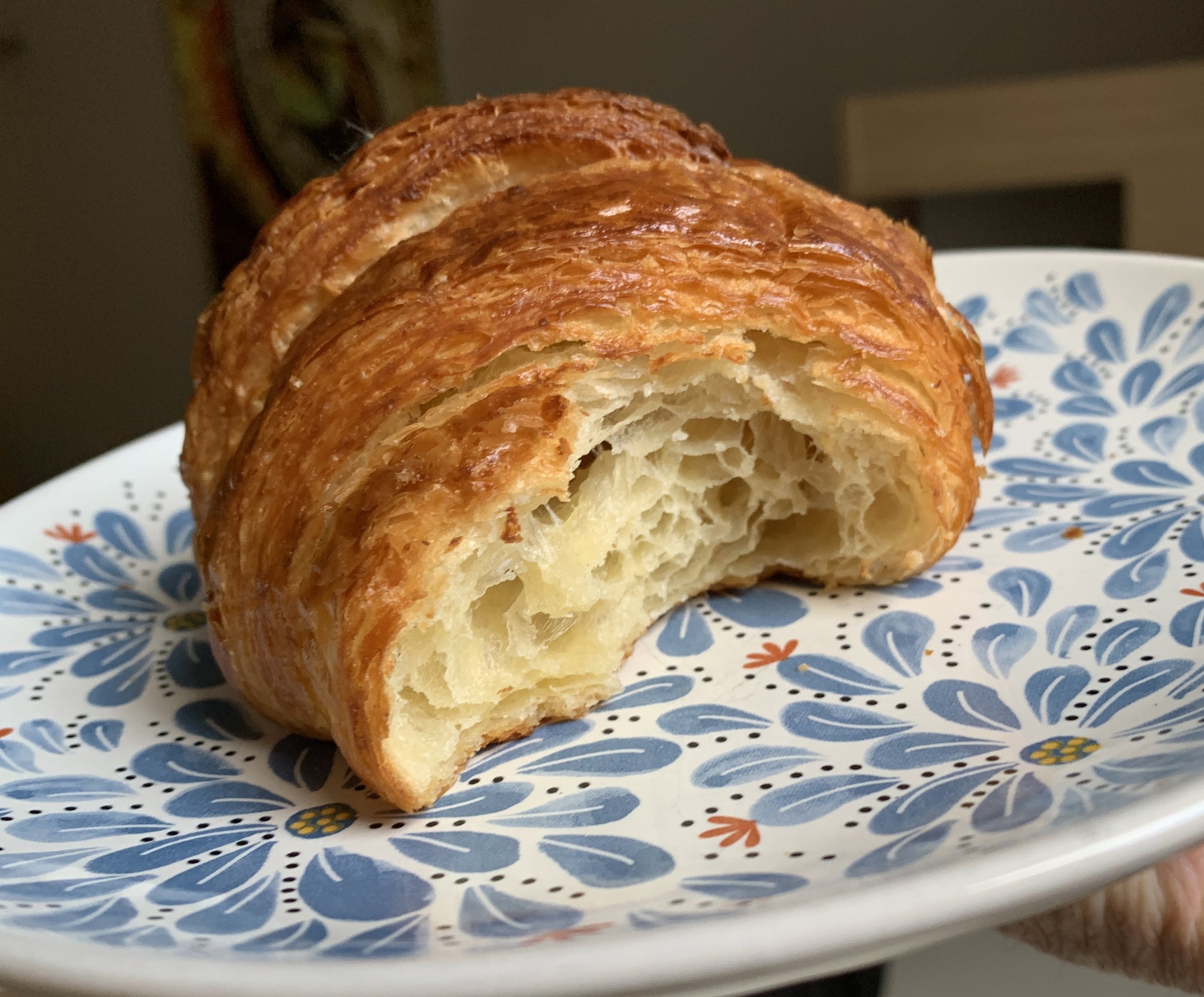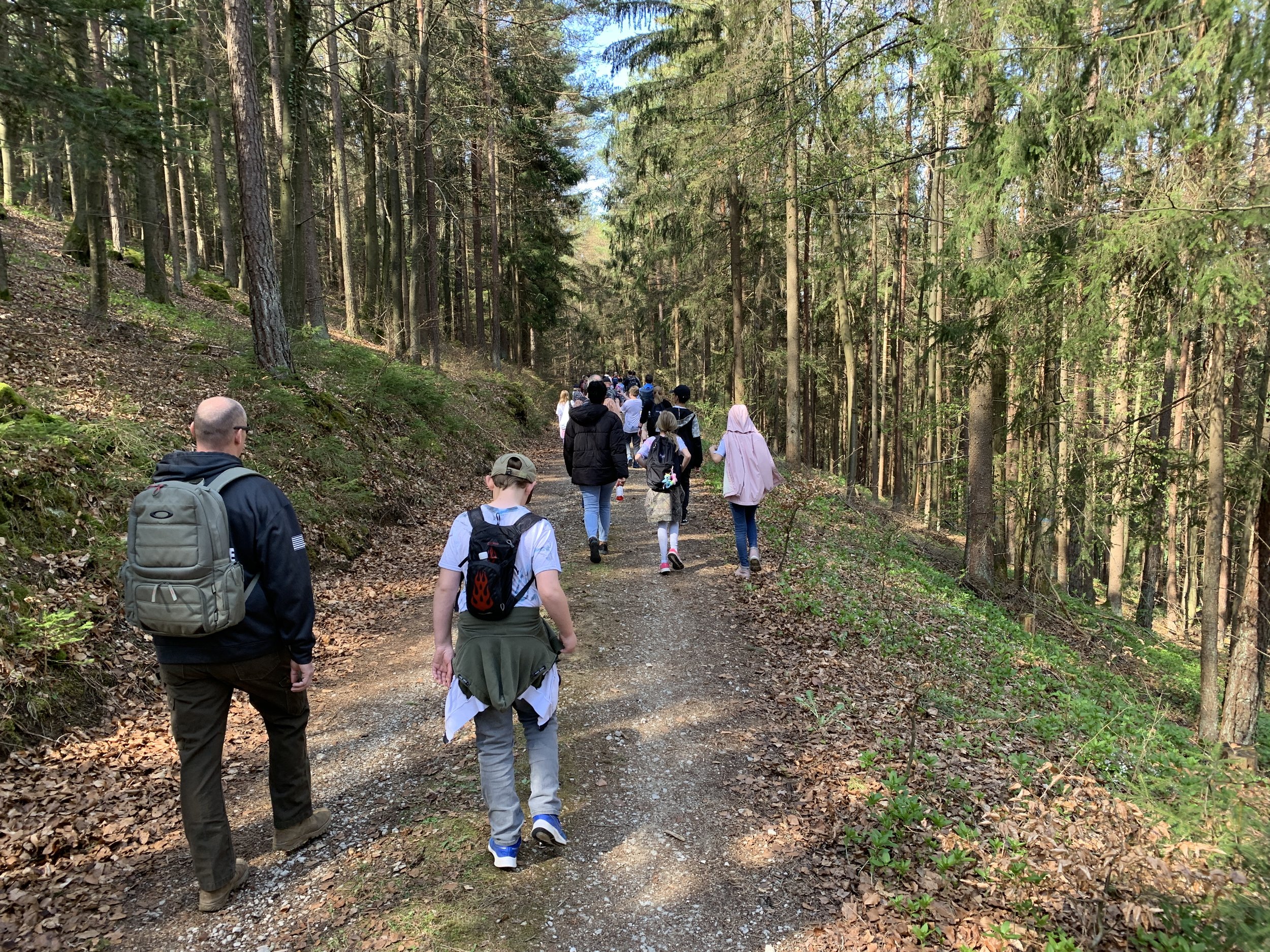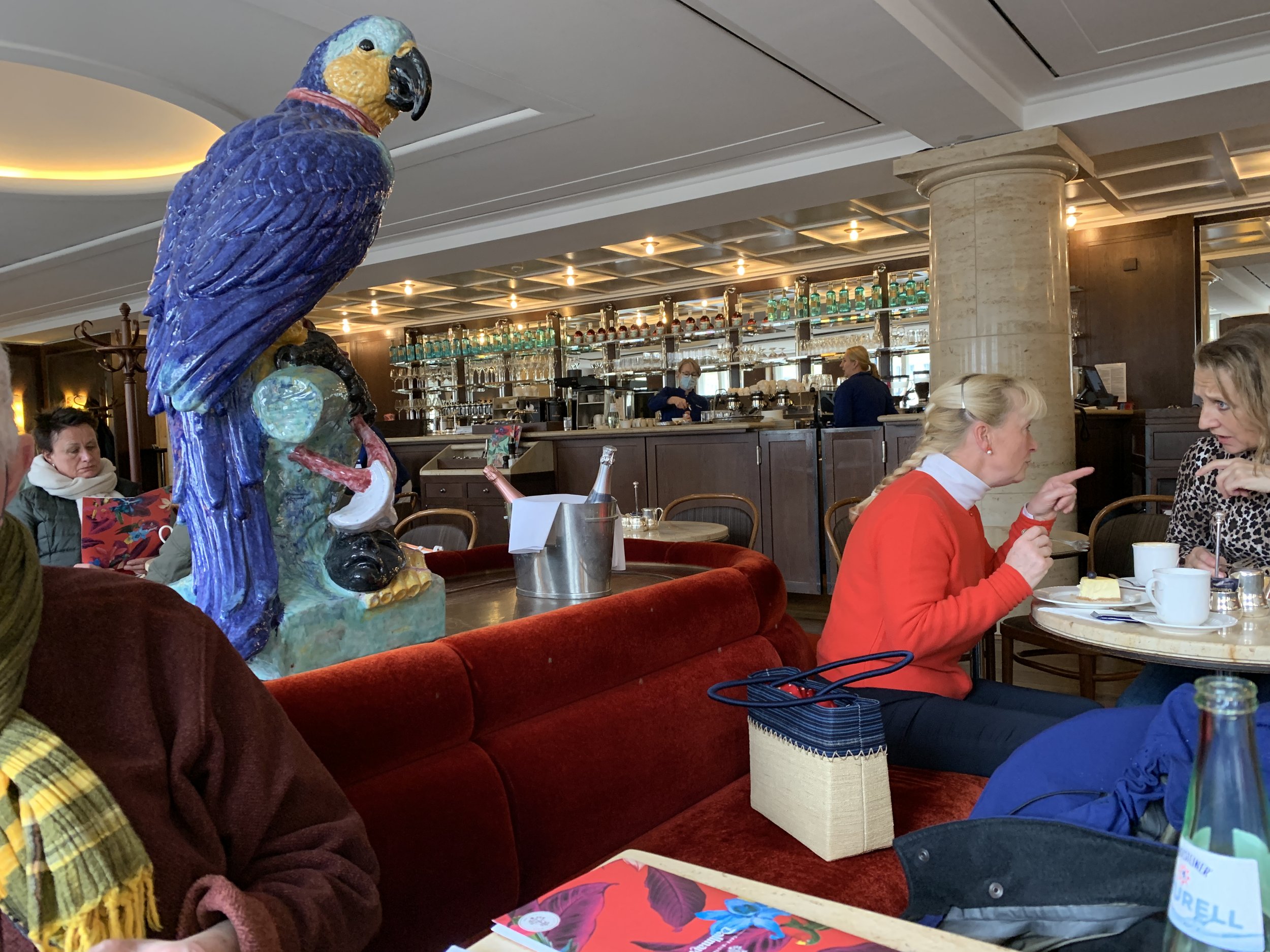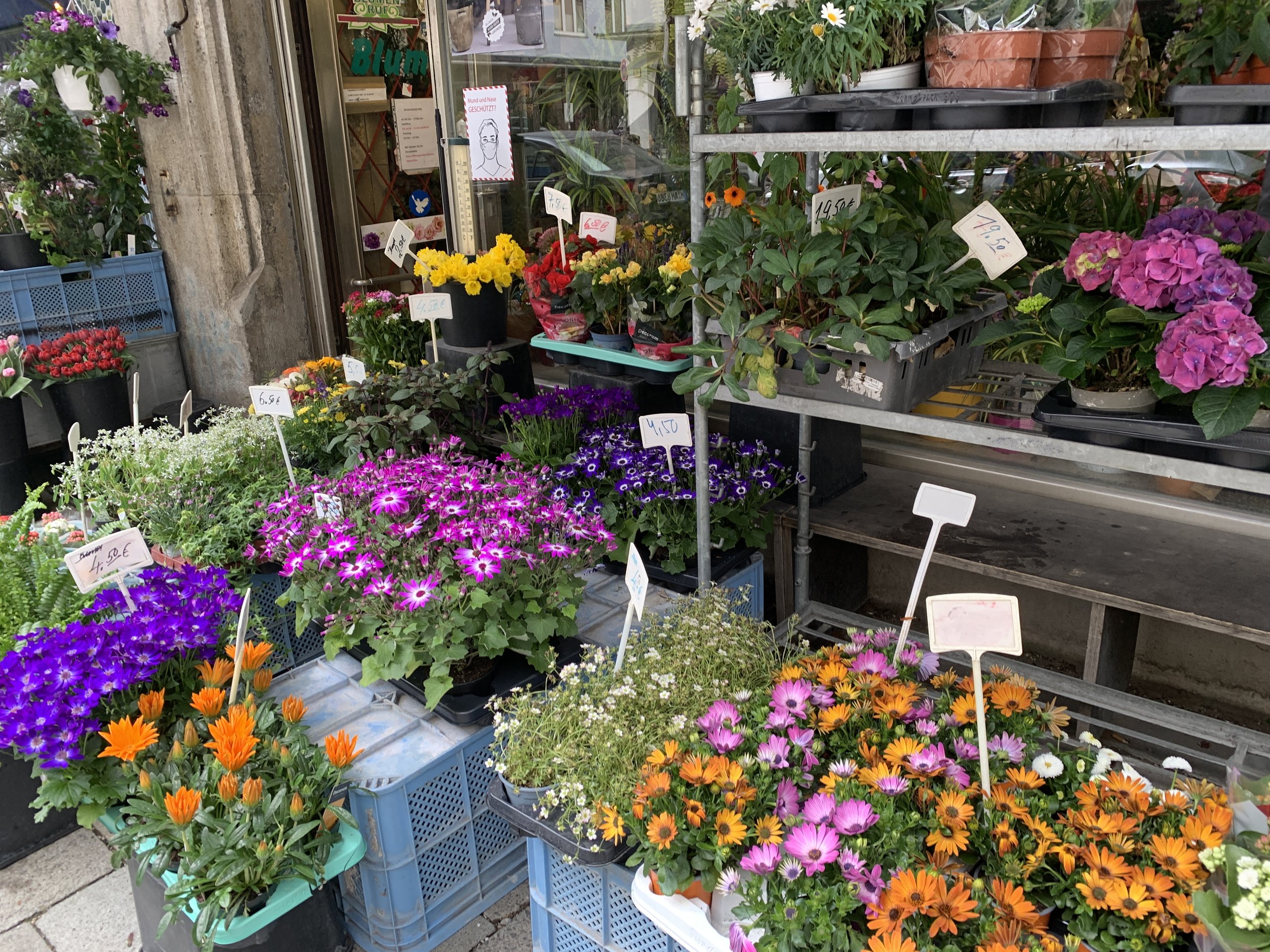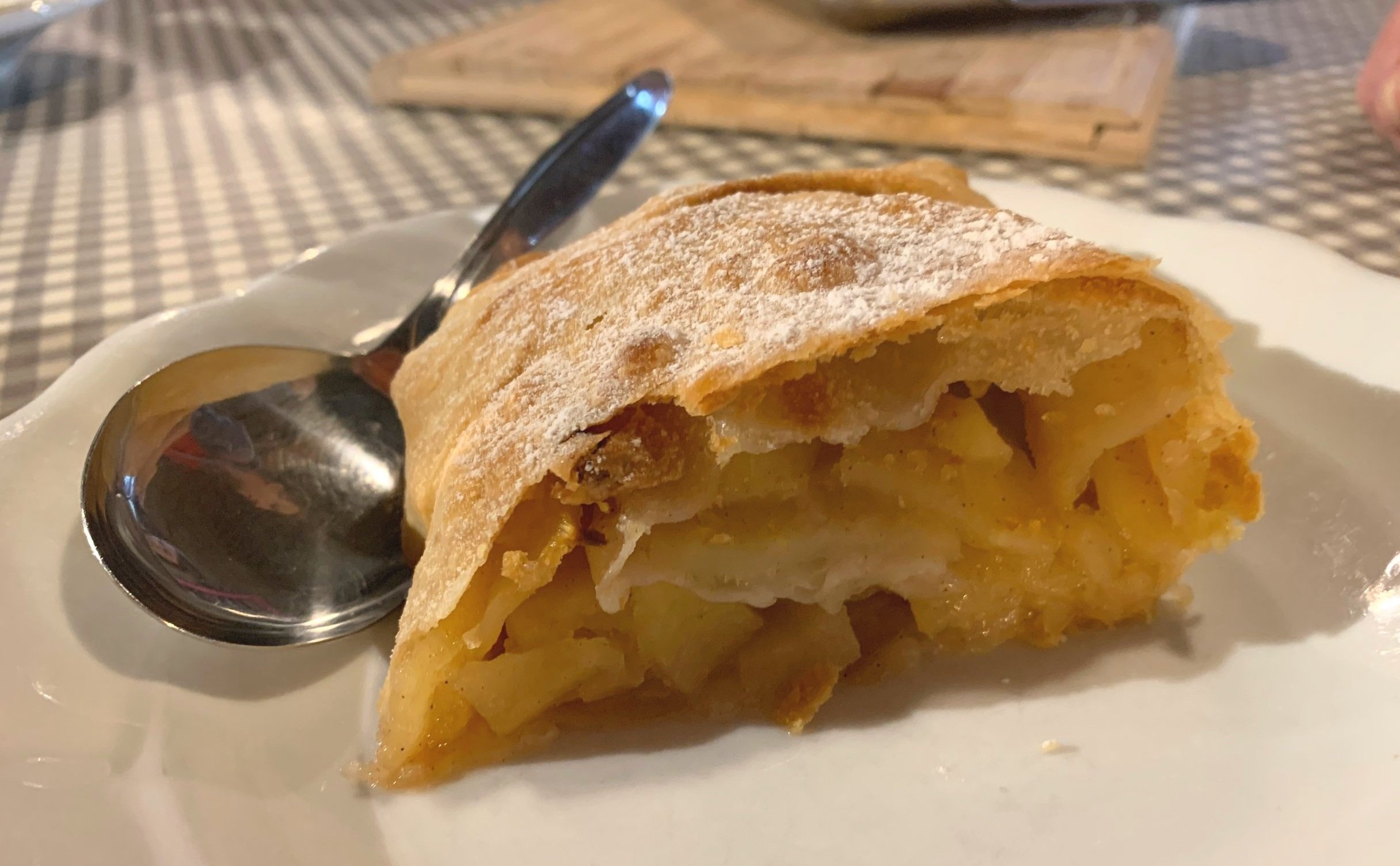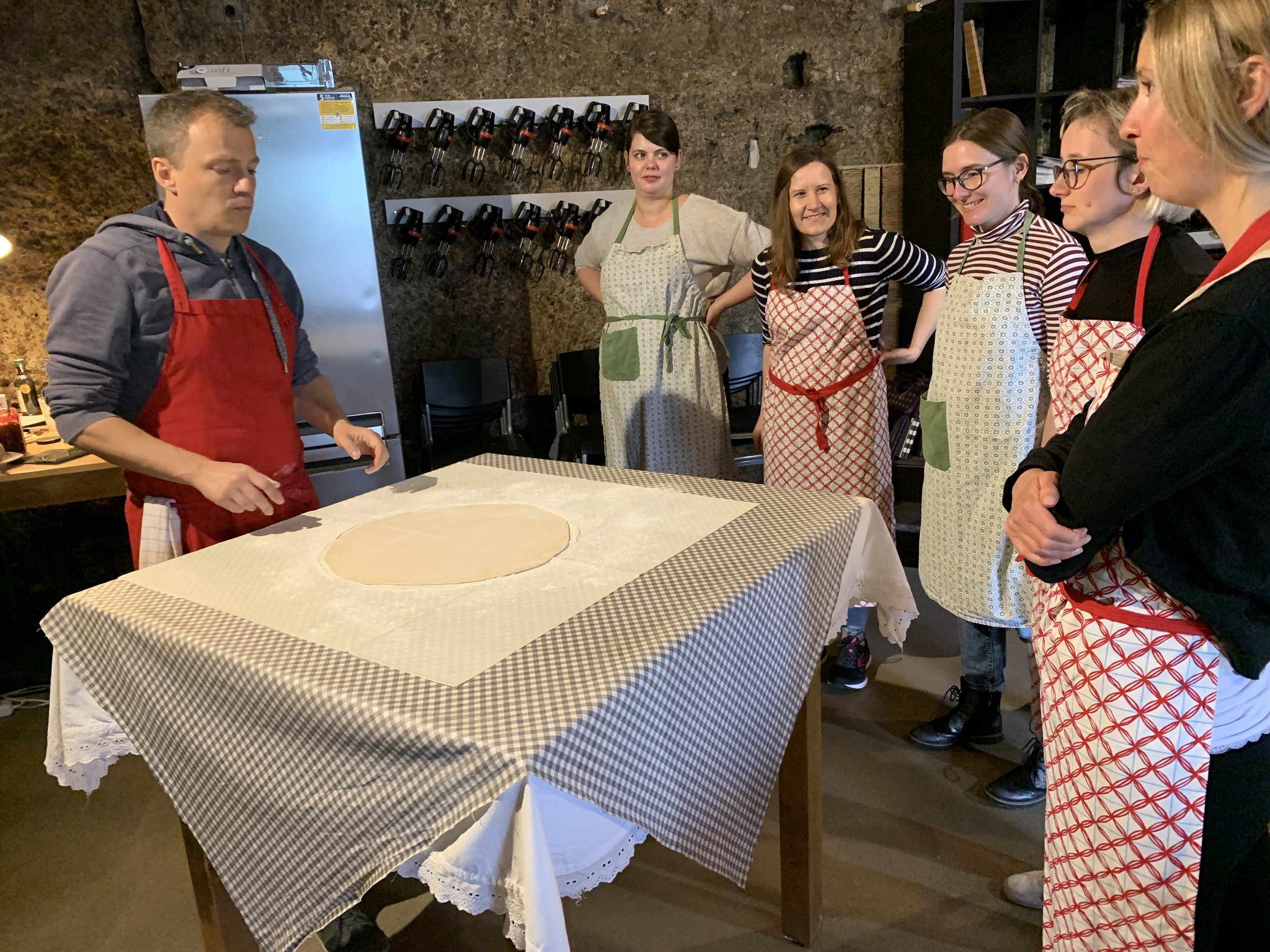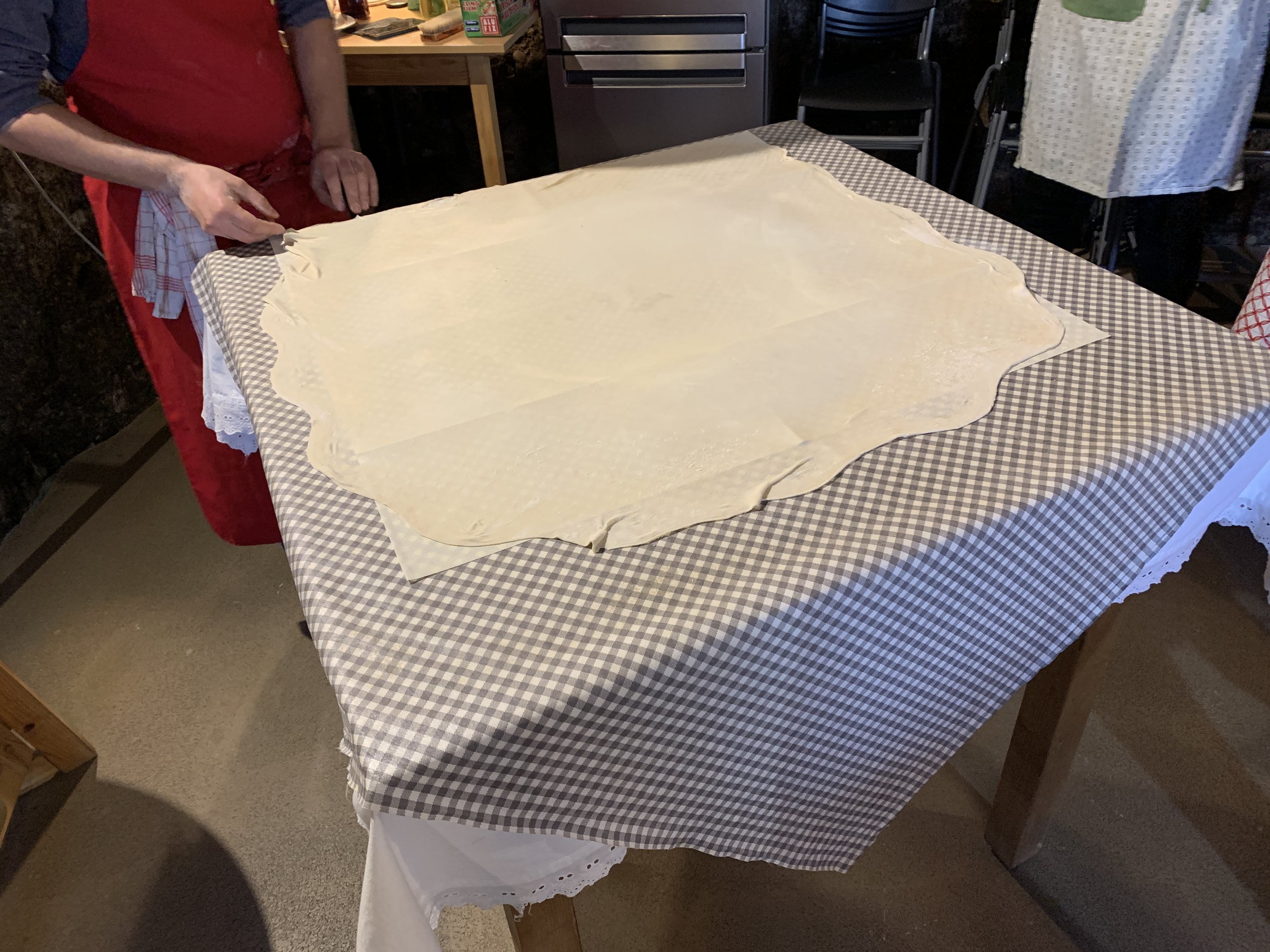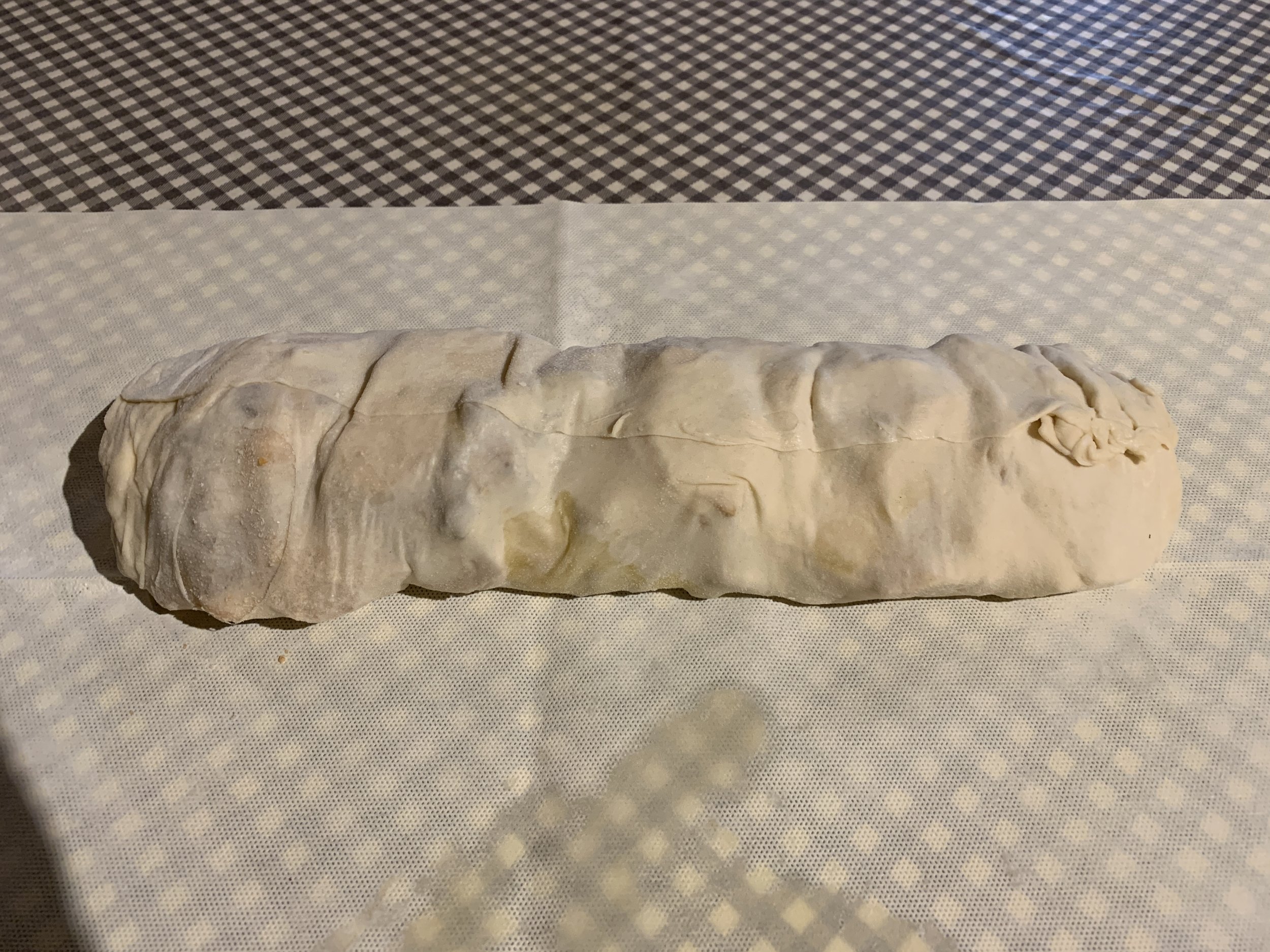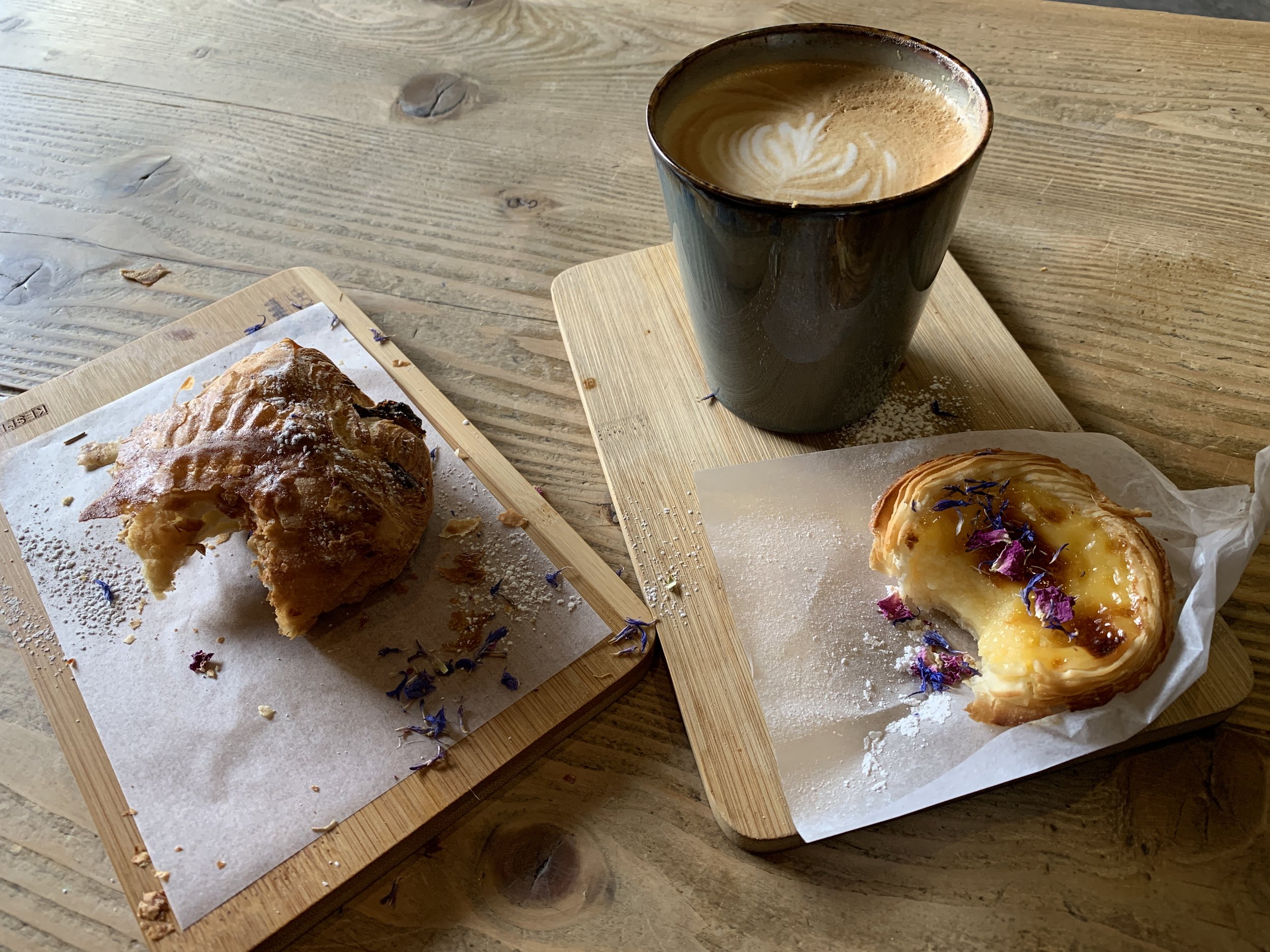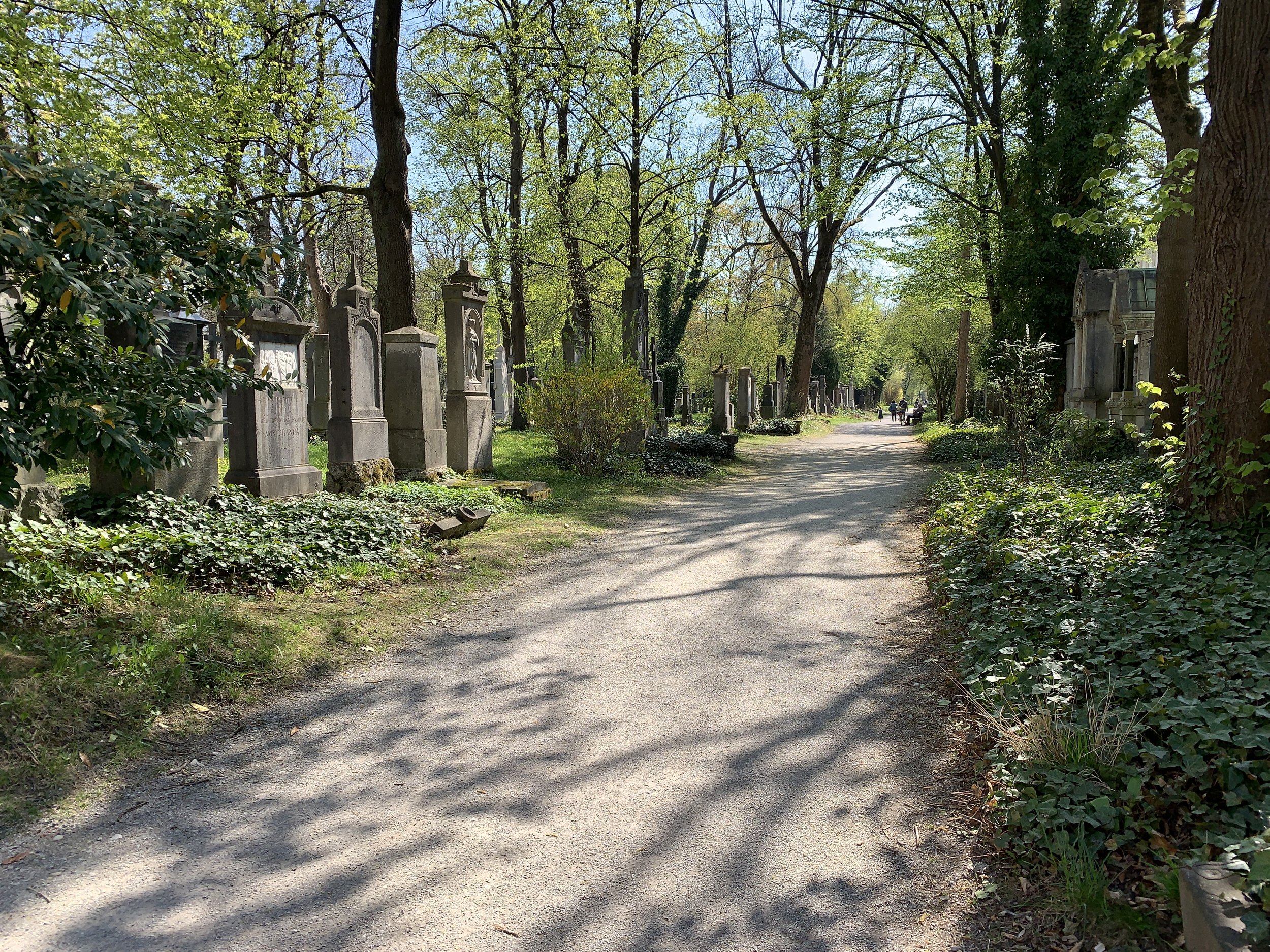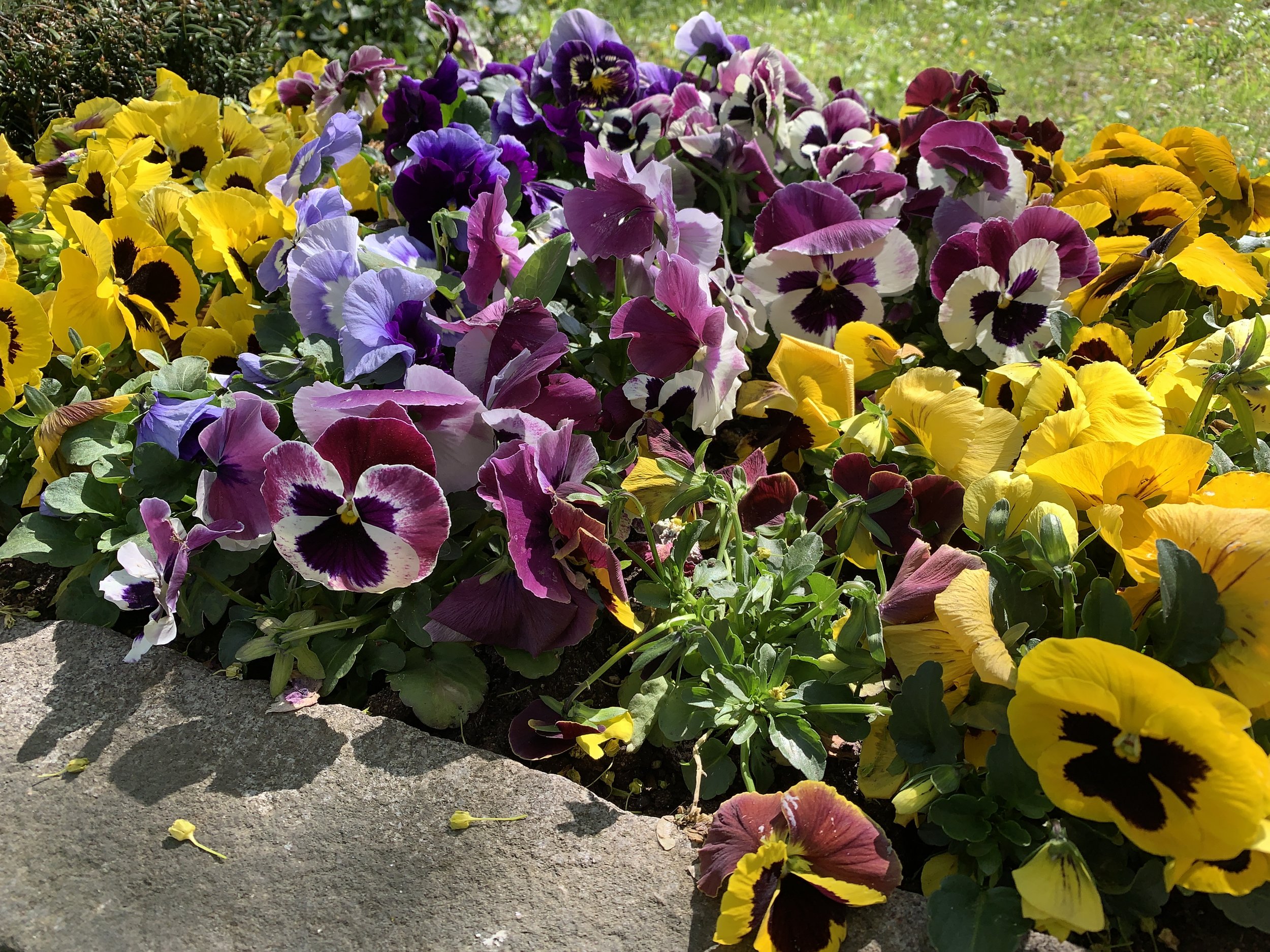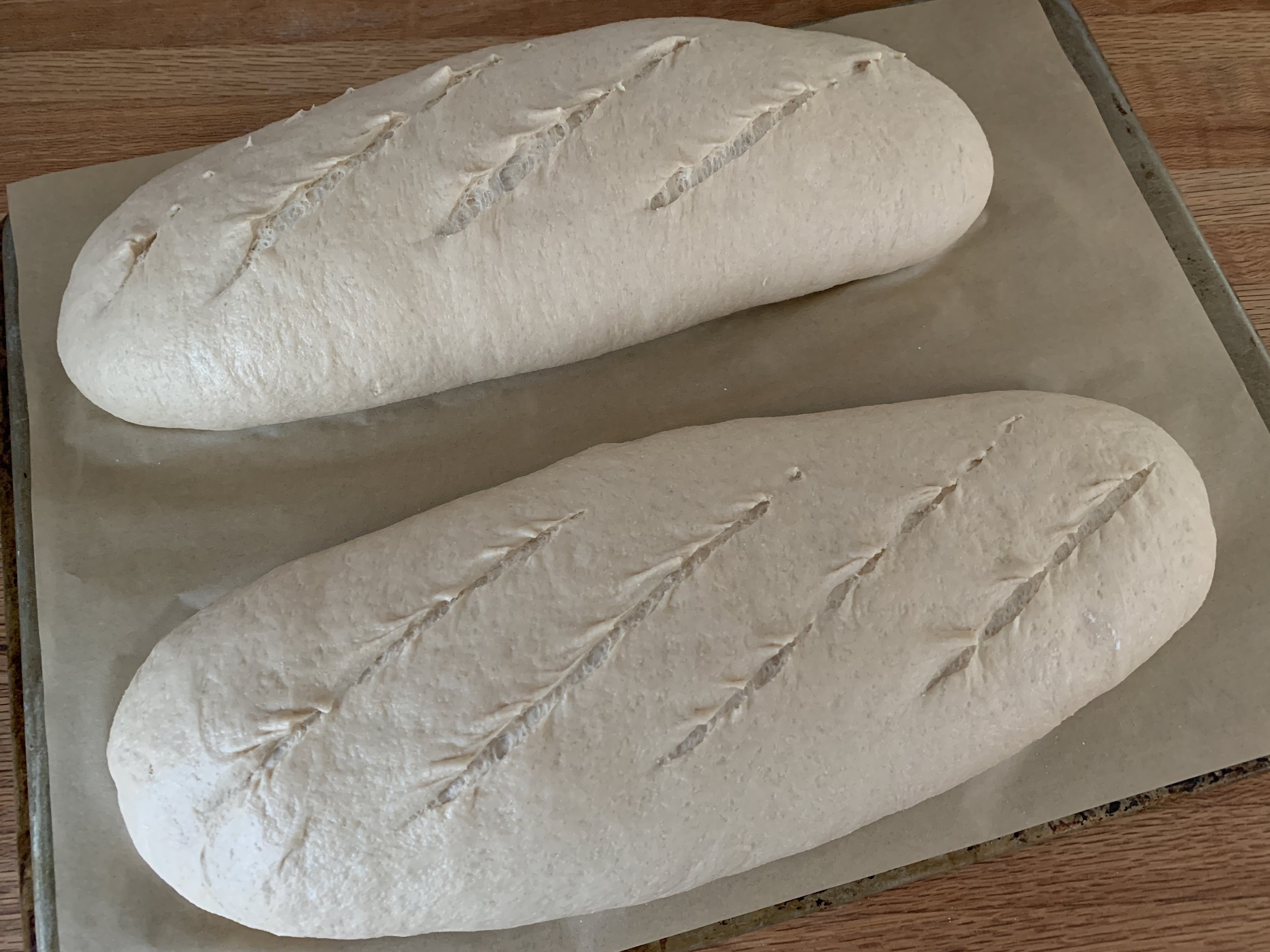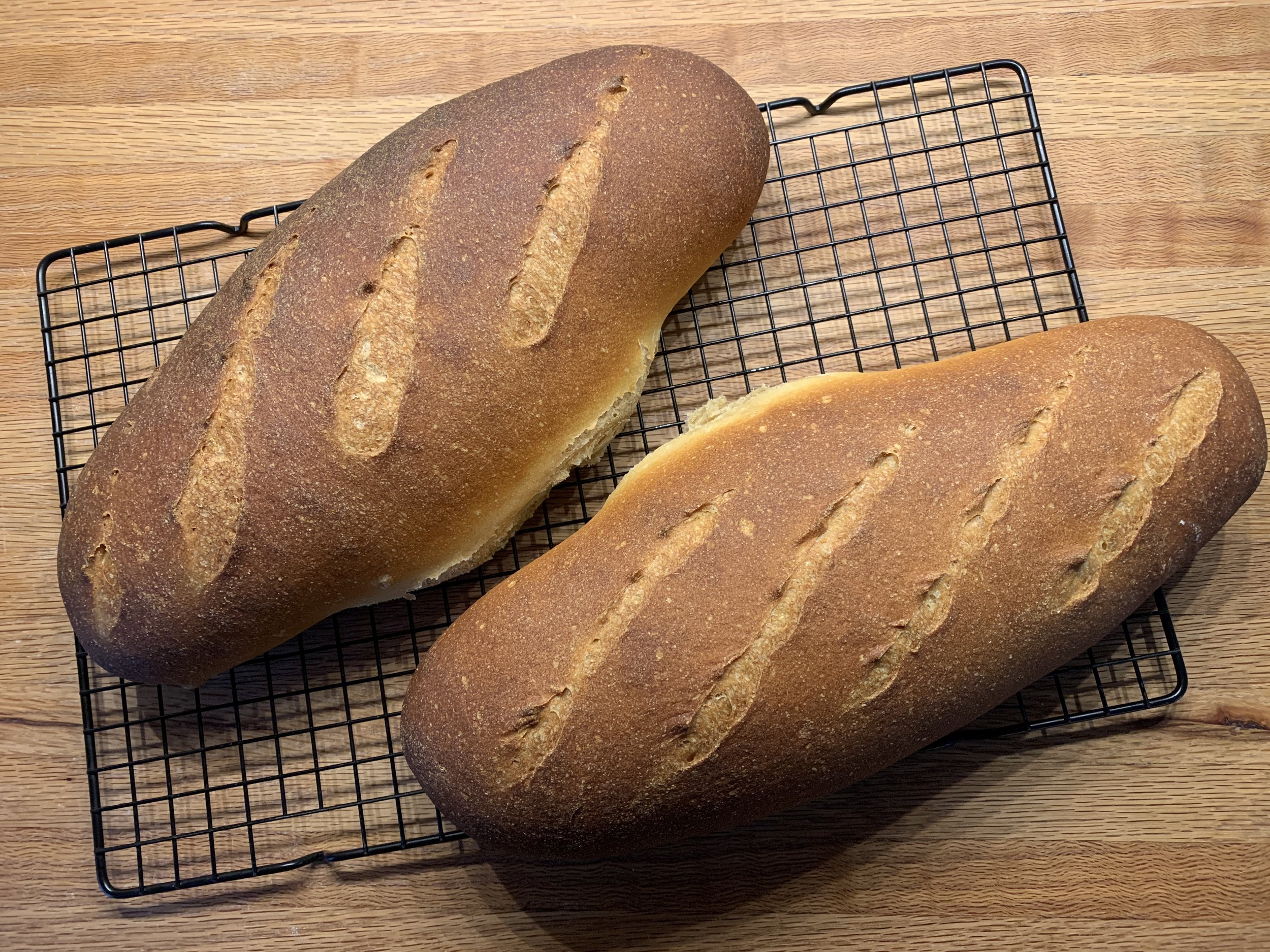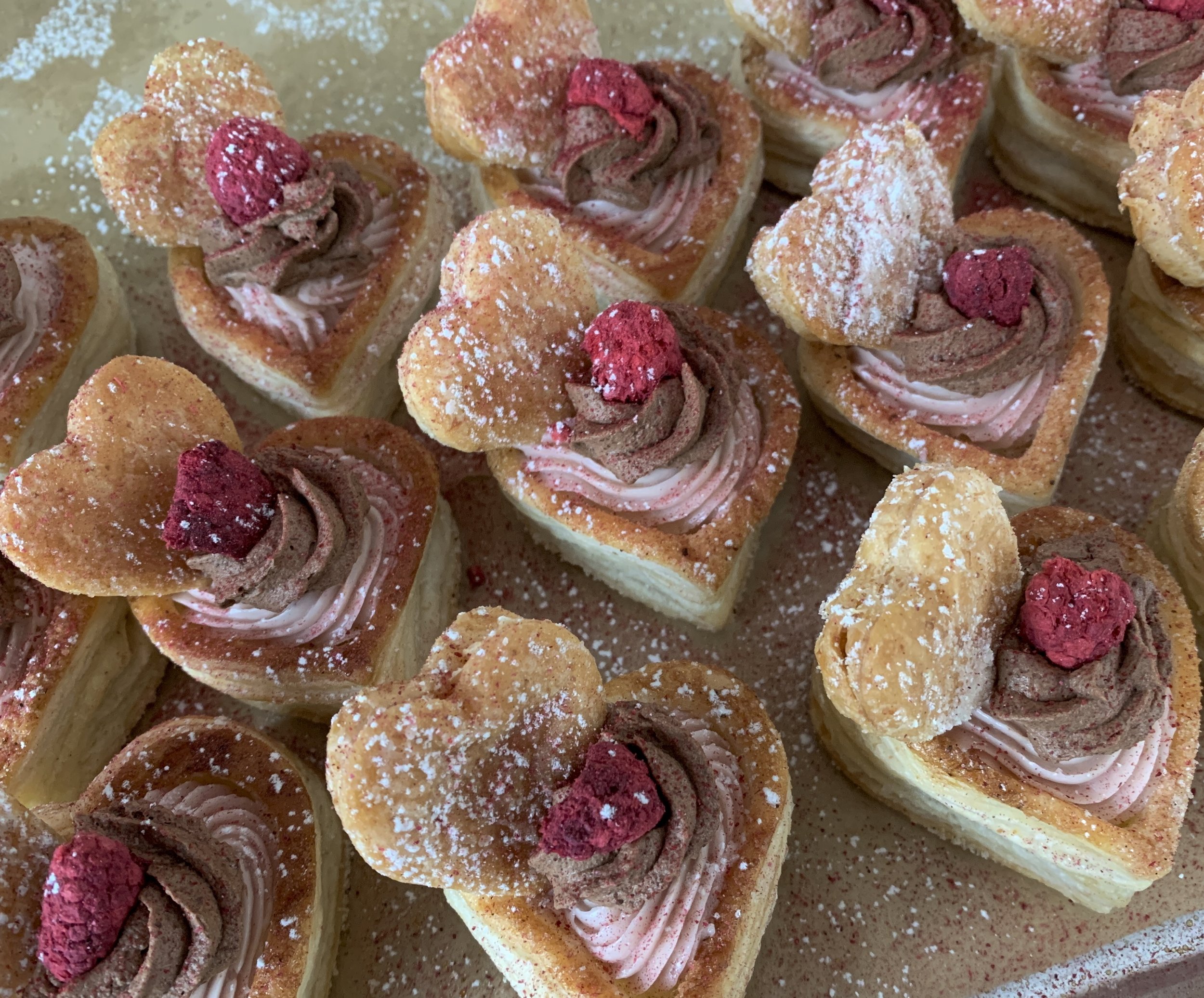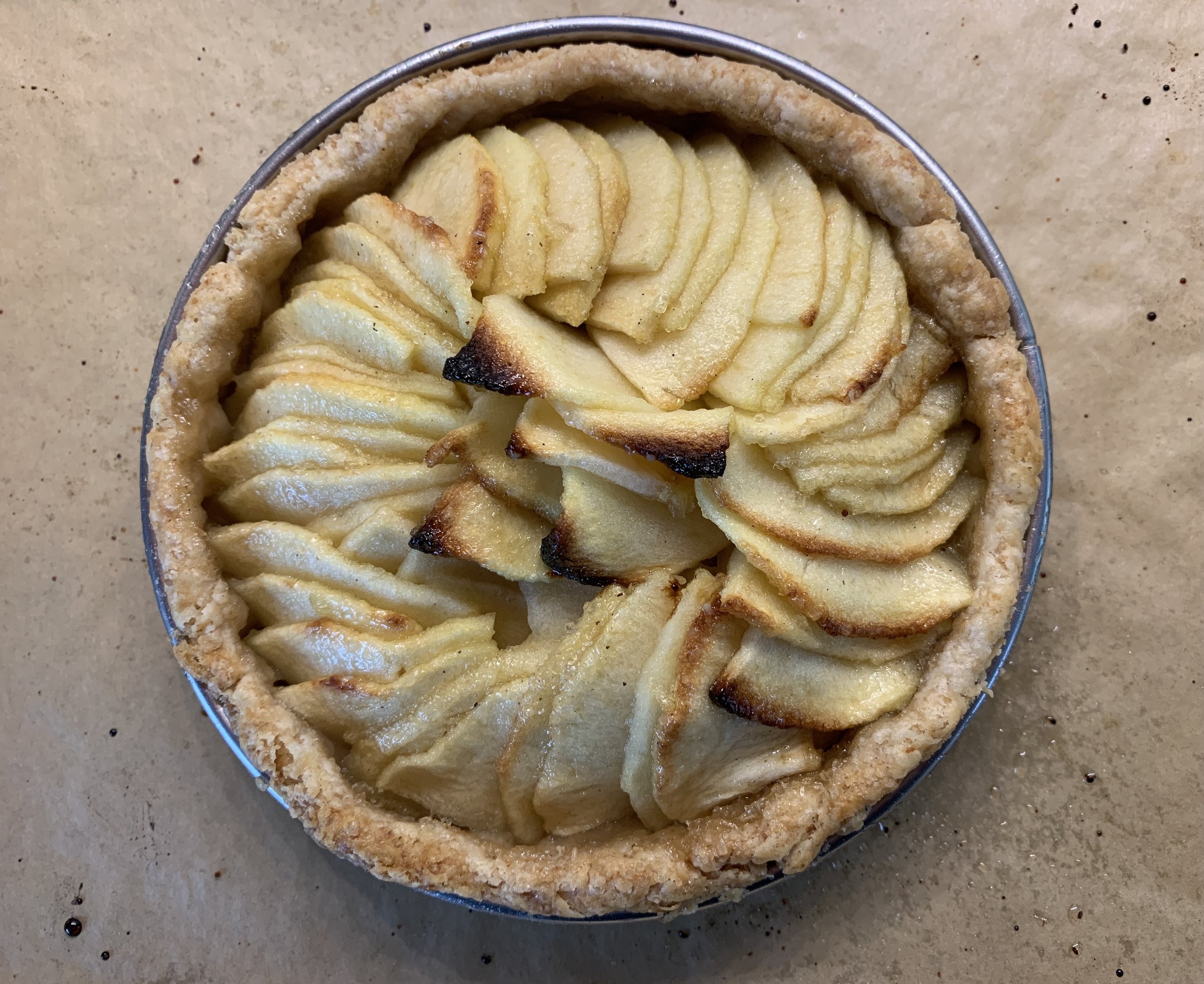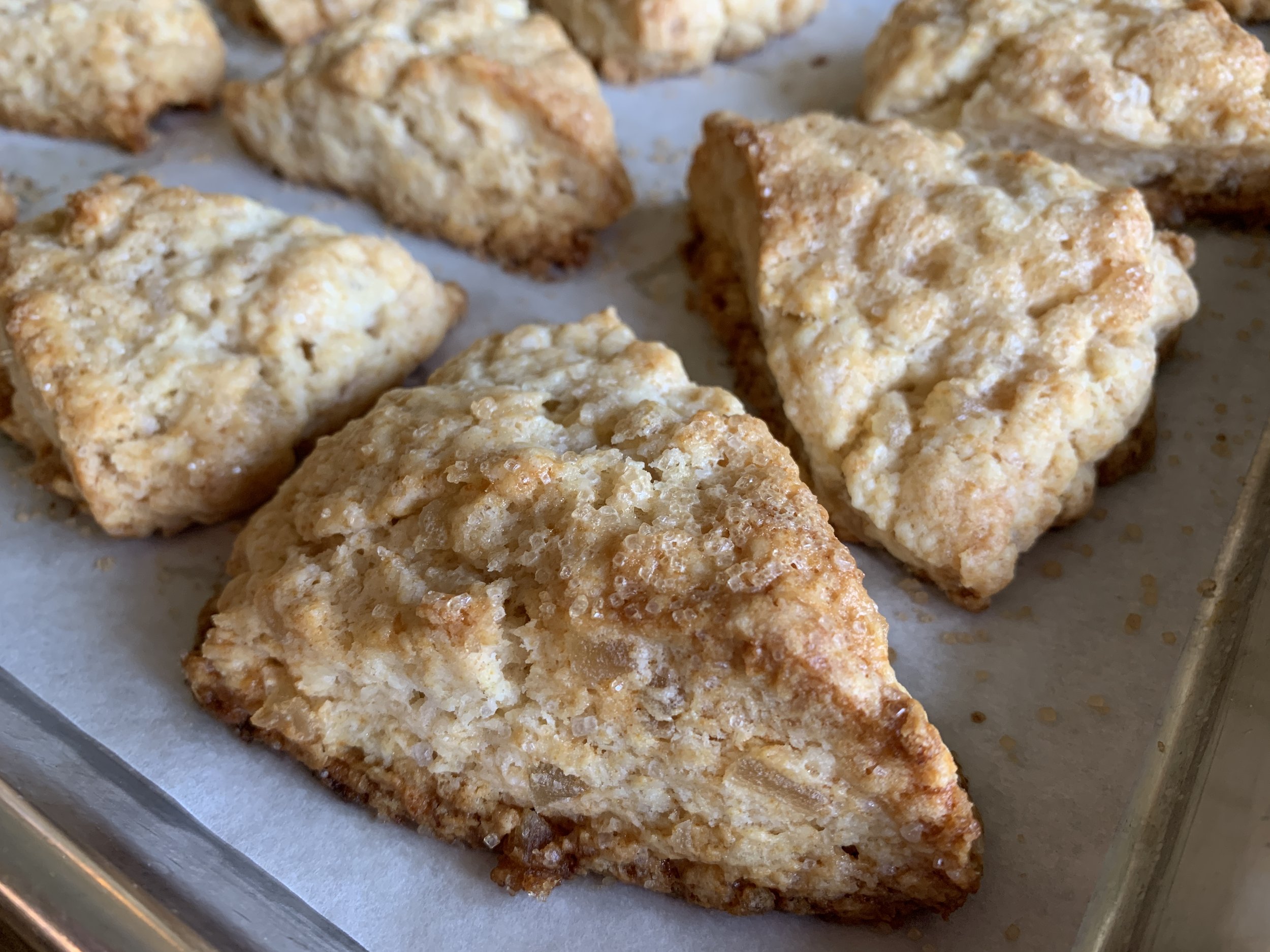Cherry chocolate ganache teacakes
/Hi all! It’s been a bit busy lately with some family birthday and anniversary celebrations which means any new baking projects and blogging have taken a back seat. Not to mention some pretty hot days here and there which haven’t inspired much kitchen activity.
I recently wrote about my cherry lime Breton version of a Gateau Basque in which I described roasting sweet cherries and puréeing some of them for cherry chocolate ganache (AND cherry Swiss meringue buttercream!). First let me just say - ganache is one of the best things ever!!
As I’m sure most of you know, ganache is a combo of heavy cream and chocolate, created using different ratios of those two ingredients depending on the final consistency you’d like. Place chopped chocolate (or feves, discs or wafers) in a heat proof bowl; bring the cream to a boil either on the stovetop or in the microwave; pour the cream over the chocolate and gently blend until smooth. I’ve been using Guittard’s Lever du Soleil 61% wafers as my house chocolate - love it for ganache, almond bark and whatever else might come along.
Here are a few ganache examples: a medium or 1:1 ganache is made with equal weights of cream and chocolate. Use it while it’s still warm to glaze a cake; let it set up a bit and pipe it into your French macarons; chill to firm and scoop it into truffles. So many possibilities.
Change up the ratio by using more cream, let’s say 2.5 cream to 1 chocolate by weight, for a softer ganache. Chill it and then whip it up just like whipped cream. What a great way to layer/garnish a delicate chocolate cake or top a layer of chopped toasted nuts and caramel on the bottom of a blind baked tart shell. Yum.
Go the other direction using more chocolate than cream for a firmer ganache. Get the picture?
Let’s get on to the project at hand.
I’ve made raspberry chocolate ganache in the past as a financier garnish and found it quite delightful. But frankly I don’t often think about making fruit ganache as a rule. This time I had in mind a tart cherry, brown sugar version of a favorite cake based on the recipe in Yotam Ottolenghi’s book “Sweet” and thought what the heck; why don’t I put a of dollop of ganache in the center before baking and see what happens!
When making fruit ganache, simply replace some of the cream with your chosen fruit purée (I used half cream/half purée). I wanted my ganache to be on the slightly firmer side of medium and came up with 180 g chocolate (in this case a third milk, cuz I wanted to use up what I had, and two thirds dark), 70 g heavy cream and 70 g roasted sweet cherry purée. This turned out to be plenty for the 16 cakes I baked, and the rest went into the fridge for another time. Hmmm . . . . maybe to sandwich macarons or my favorite chocolate shortbread cookies!
BTW - ganache keeps very well in the fridge for at least a couple of weeks and can also be frozen.
I approached it two ways. First: layer of batter/blob of ganache/topped with additional batter to cover the ganache. Second: batter/blob of ganache on top.
Bake at 375ºF for about 20 minutes until set and golden.
Here they are out of the oven.
Let them cool about 5-10 minutes in the molds then turn out onto a cooling rack. You can place them top or bottom side up - whichever speaks to you. I did some of each. You can see the batter/ganache/batter version below in the background, bottom side up, the ganache having settled on the bottom (which is now the top!)
The ganache on batter version is in the foreground, top side up - the chocolate behaved nicely and nestled right into the batter.
Once cooled I gave most a nice swirl of roasted sweet cherry Swiss meringue buttercream, handed a bunch out to neighbors and of course sampled a few ourselves over several days. I also froze some ungarnished to enjoy at a later date.
Steve has always been a bit leery of fruit and chocolate combos so these weren’t his fave, BUT I found them delightful with the ganache nestled in the tart cherry cake and the wonderful creaminess of the buttercream. So tasty!
Mmmm - creamy goodness
Take good care until next time.
Here’s a little trip memory - in the botanical garden in Copenhagen.

